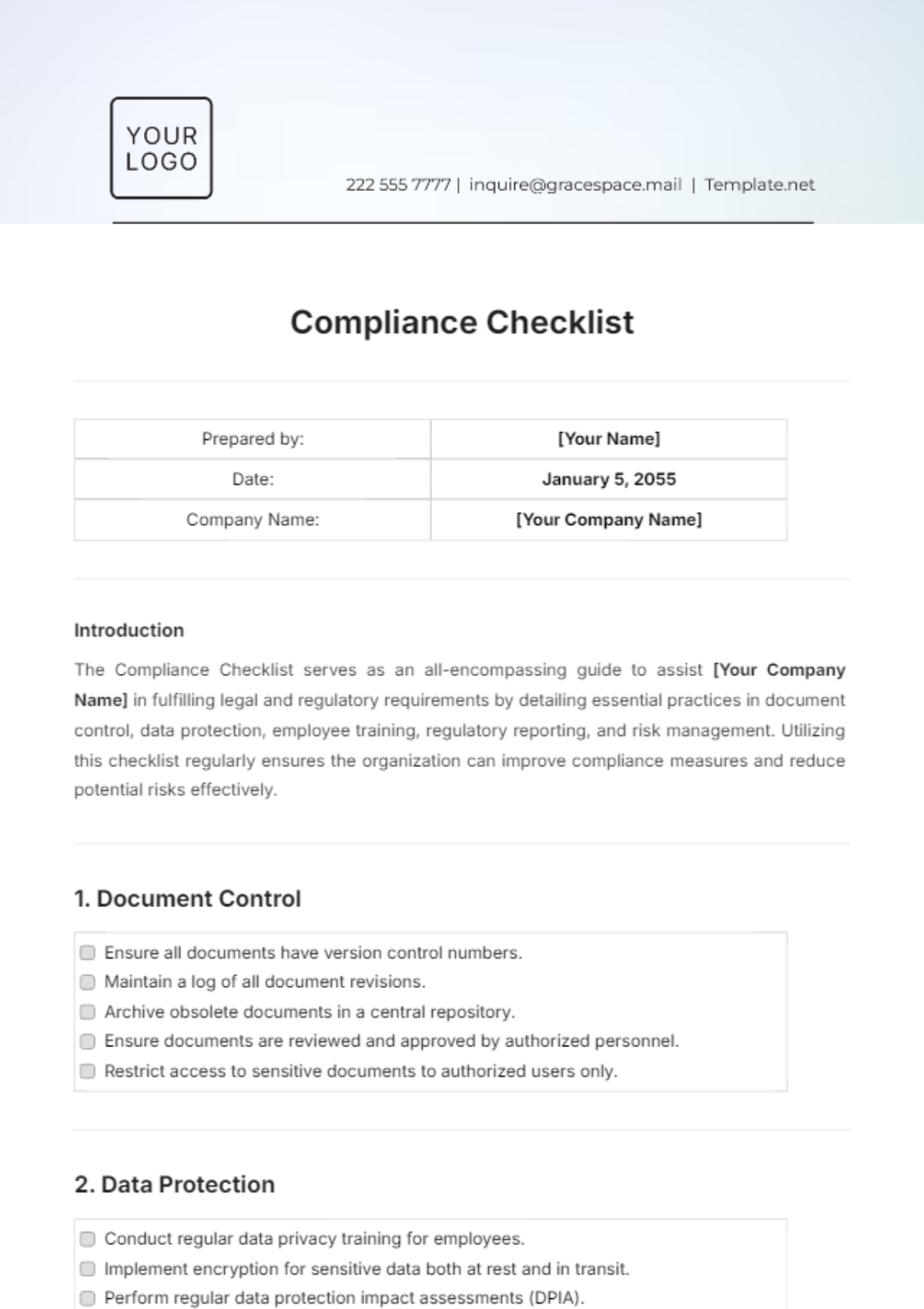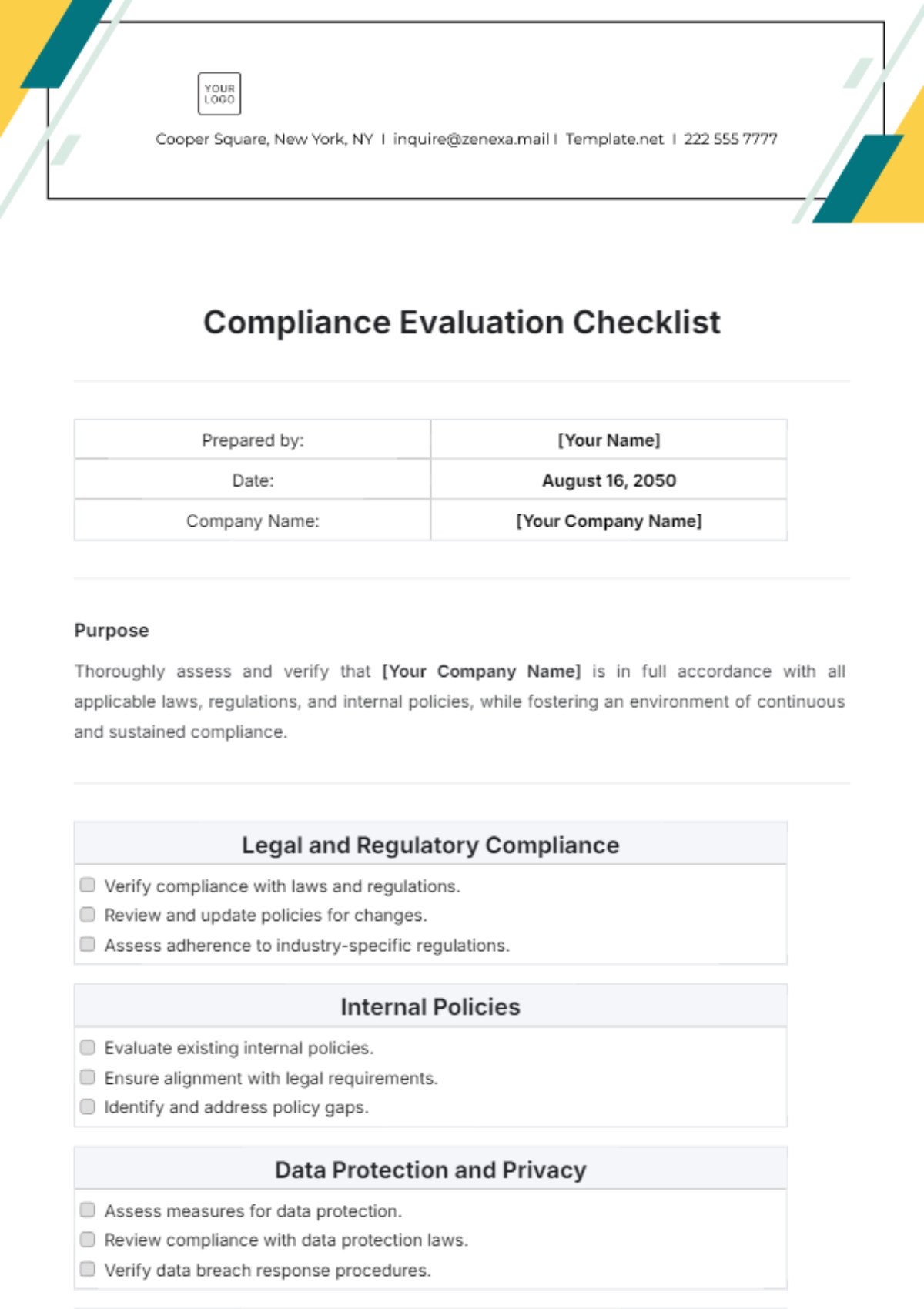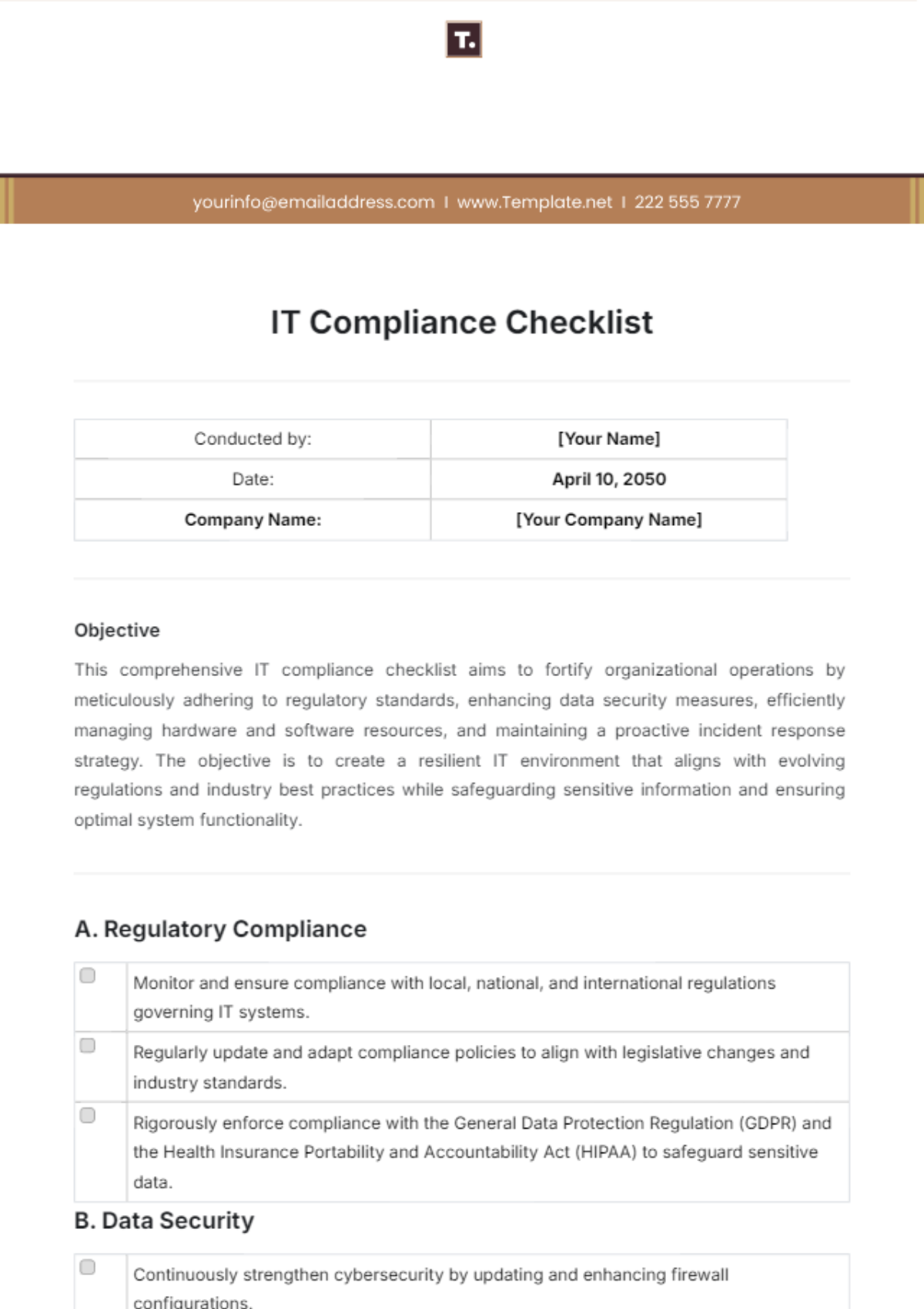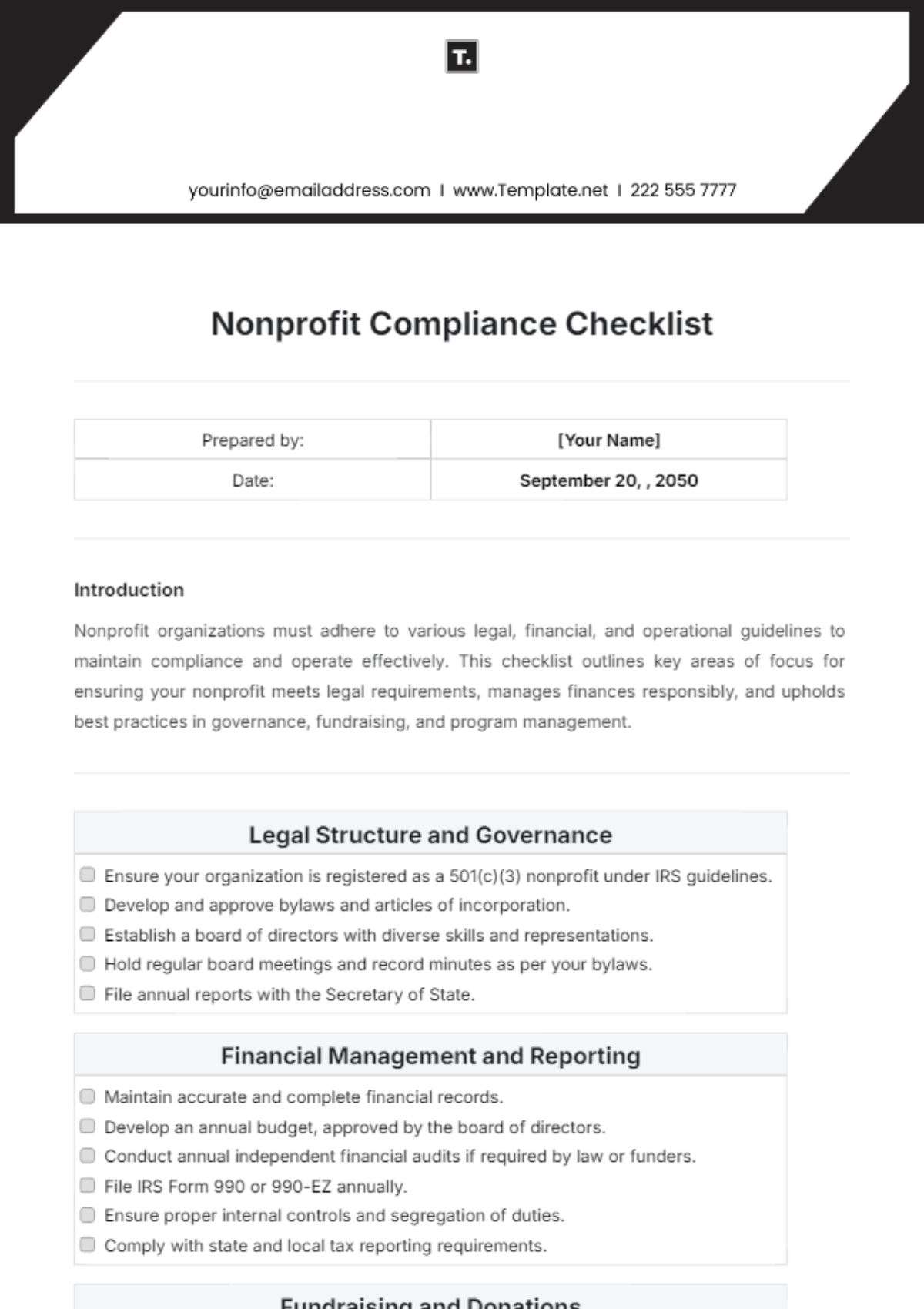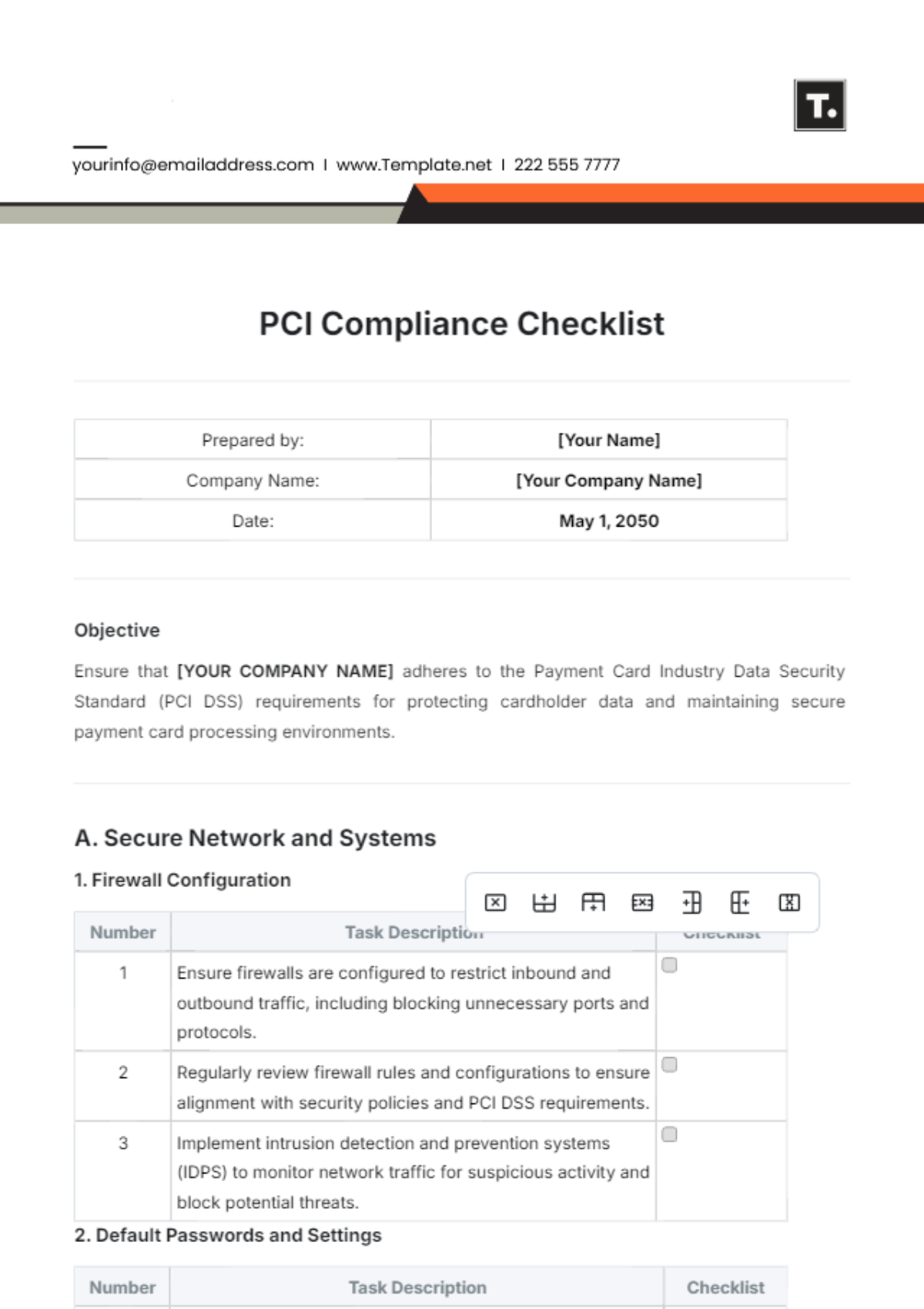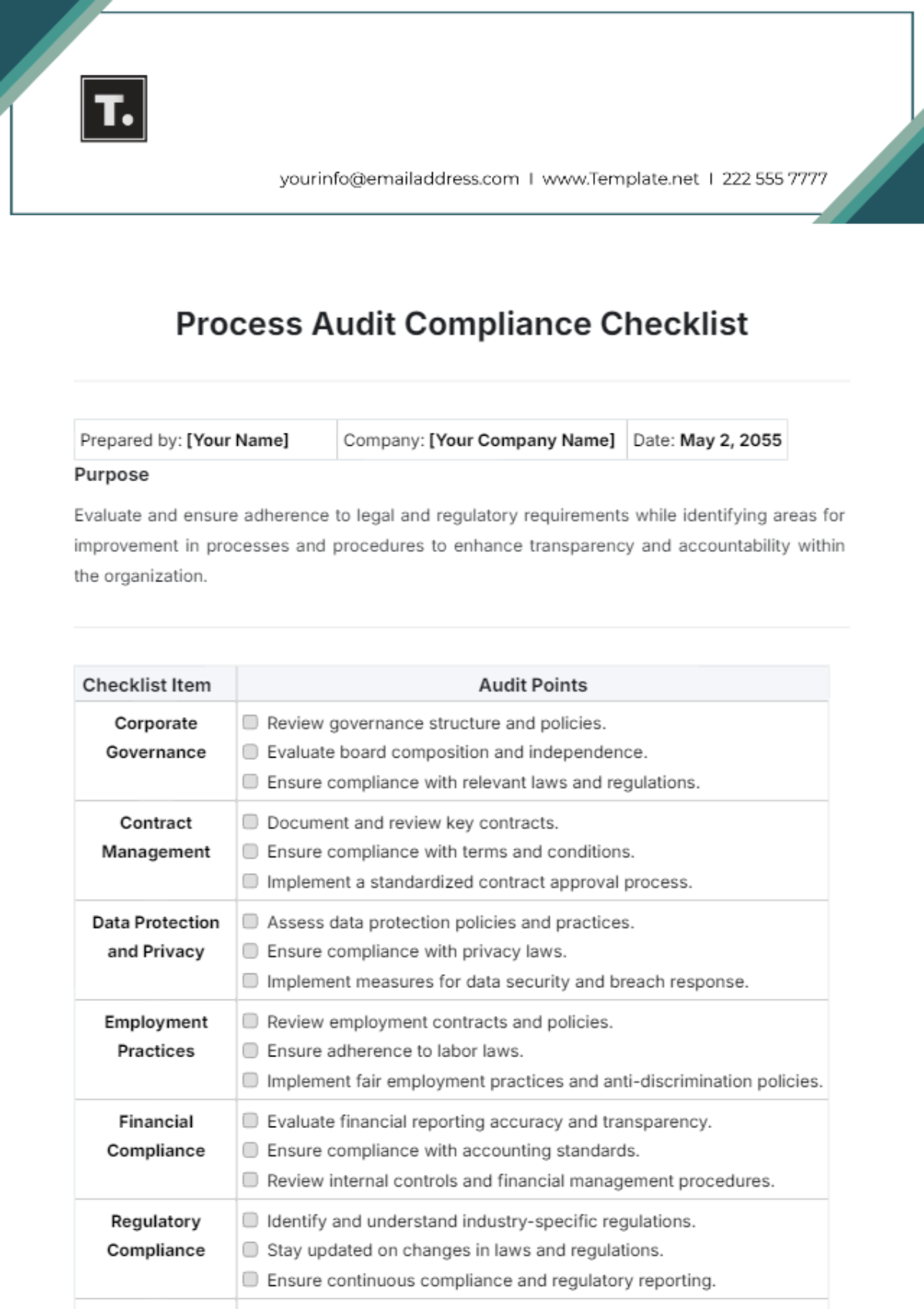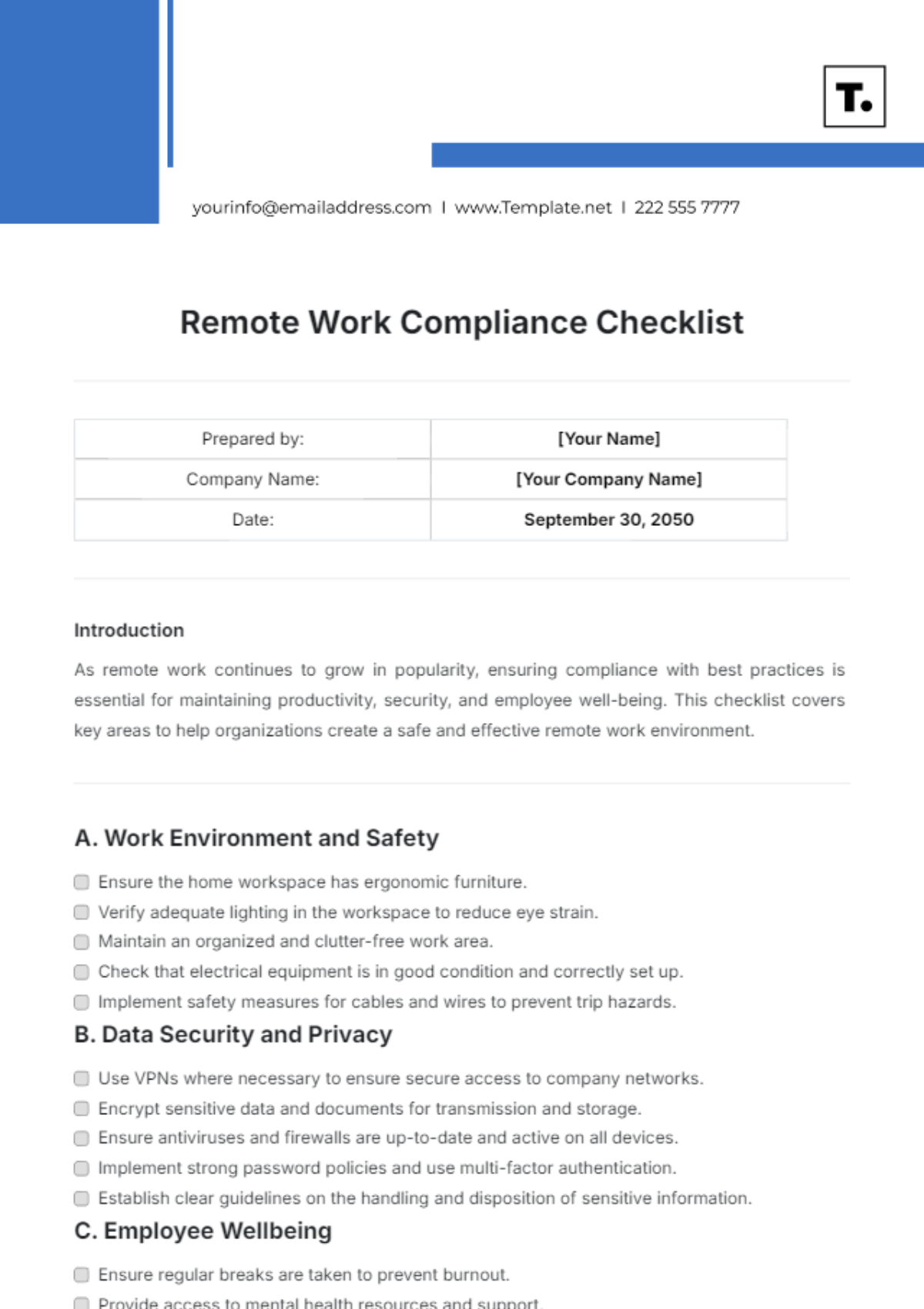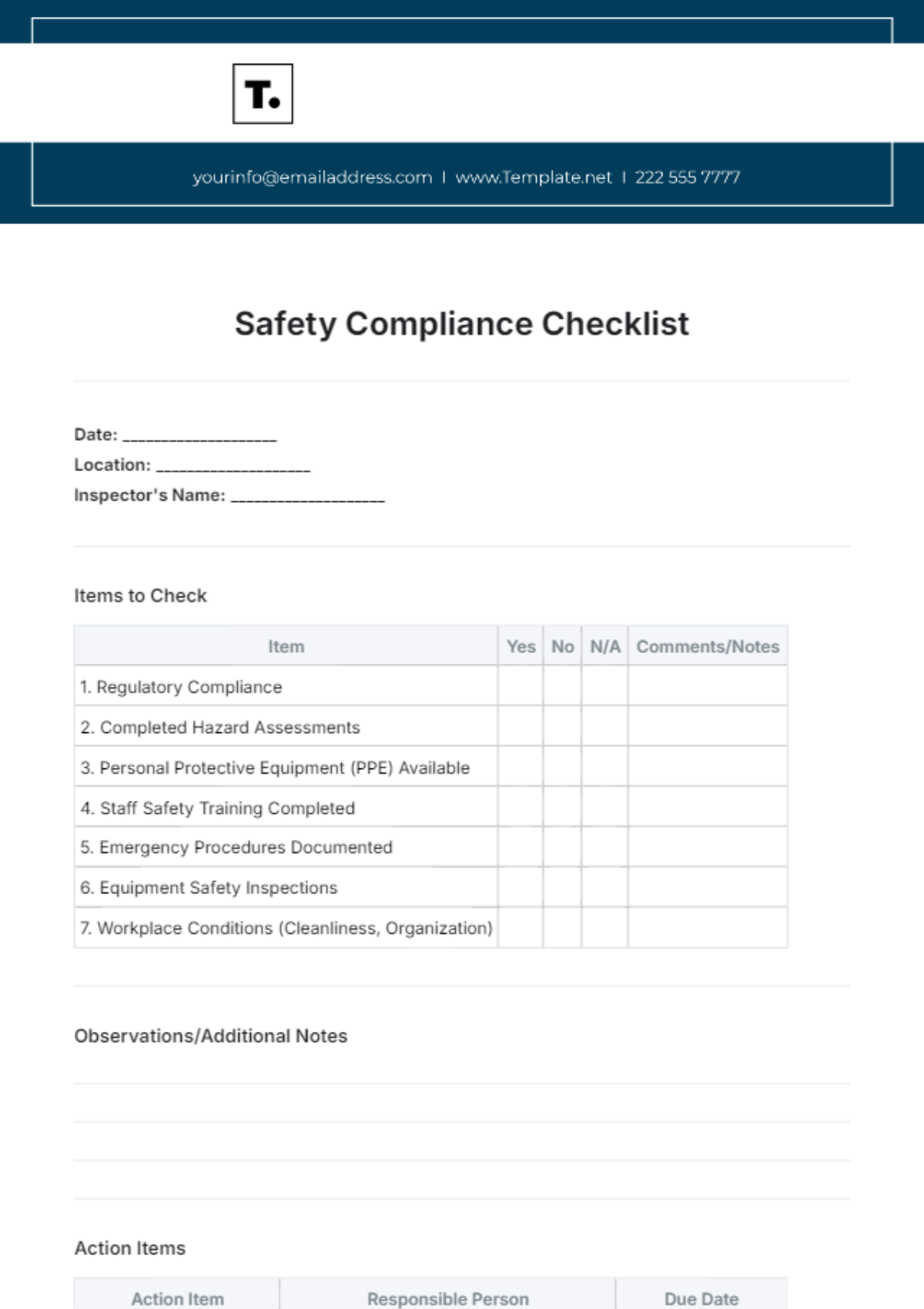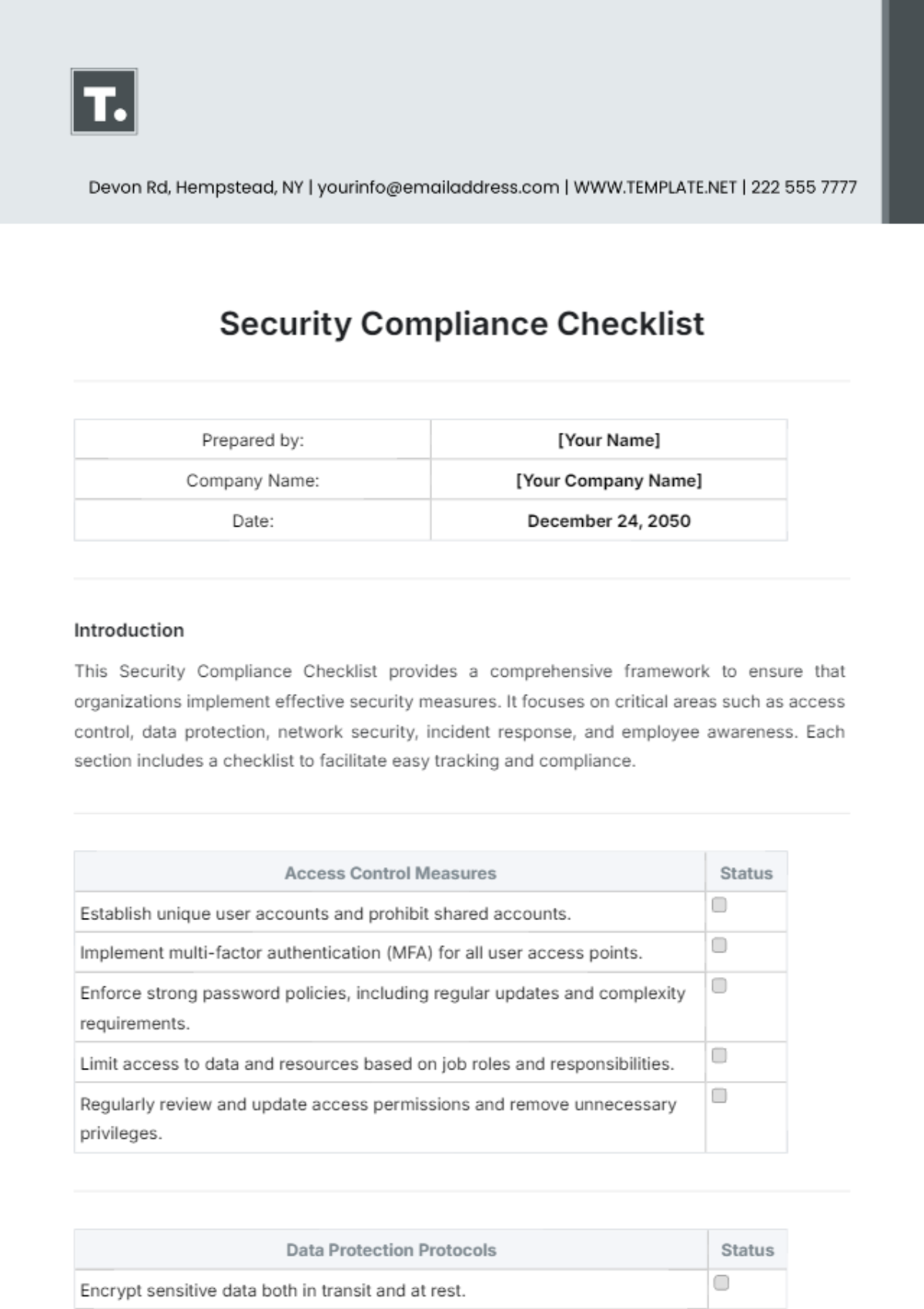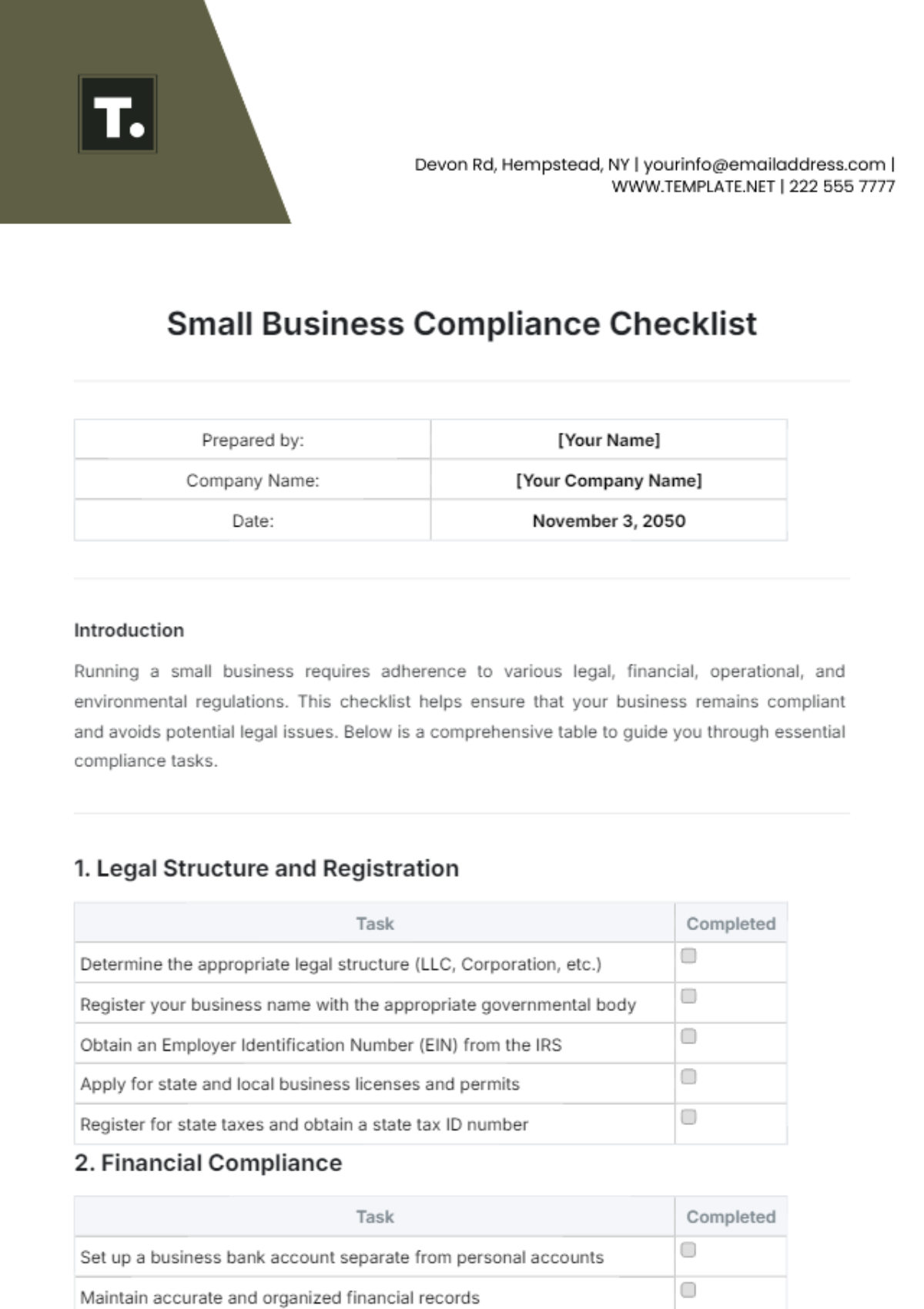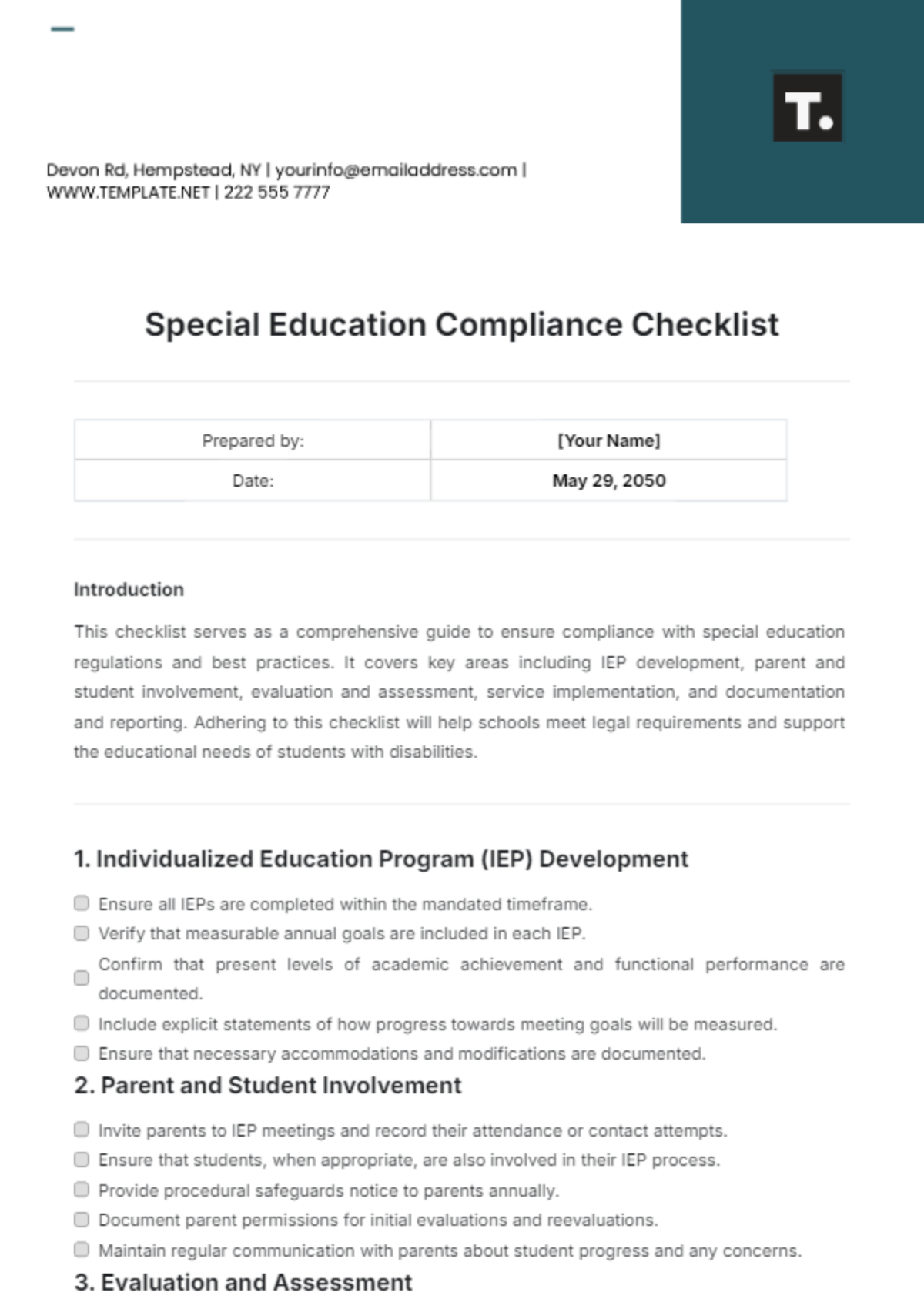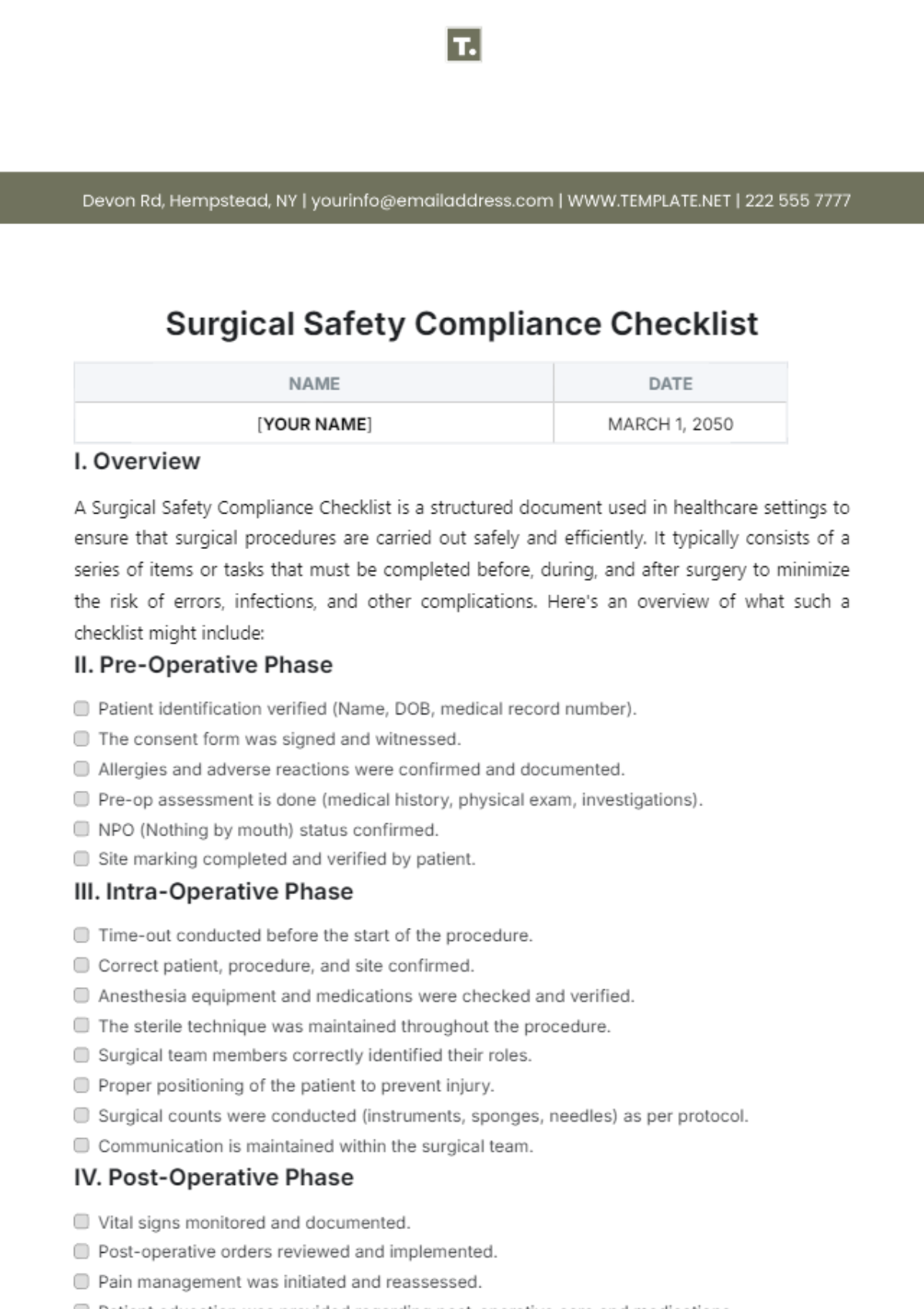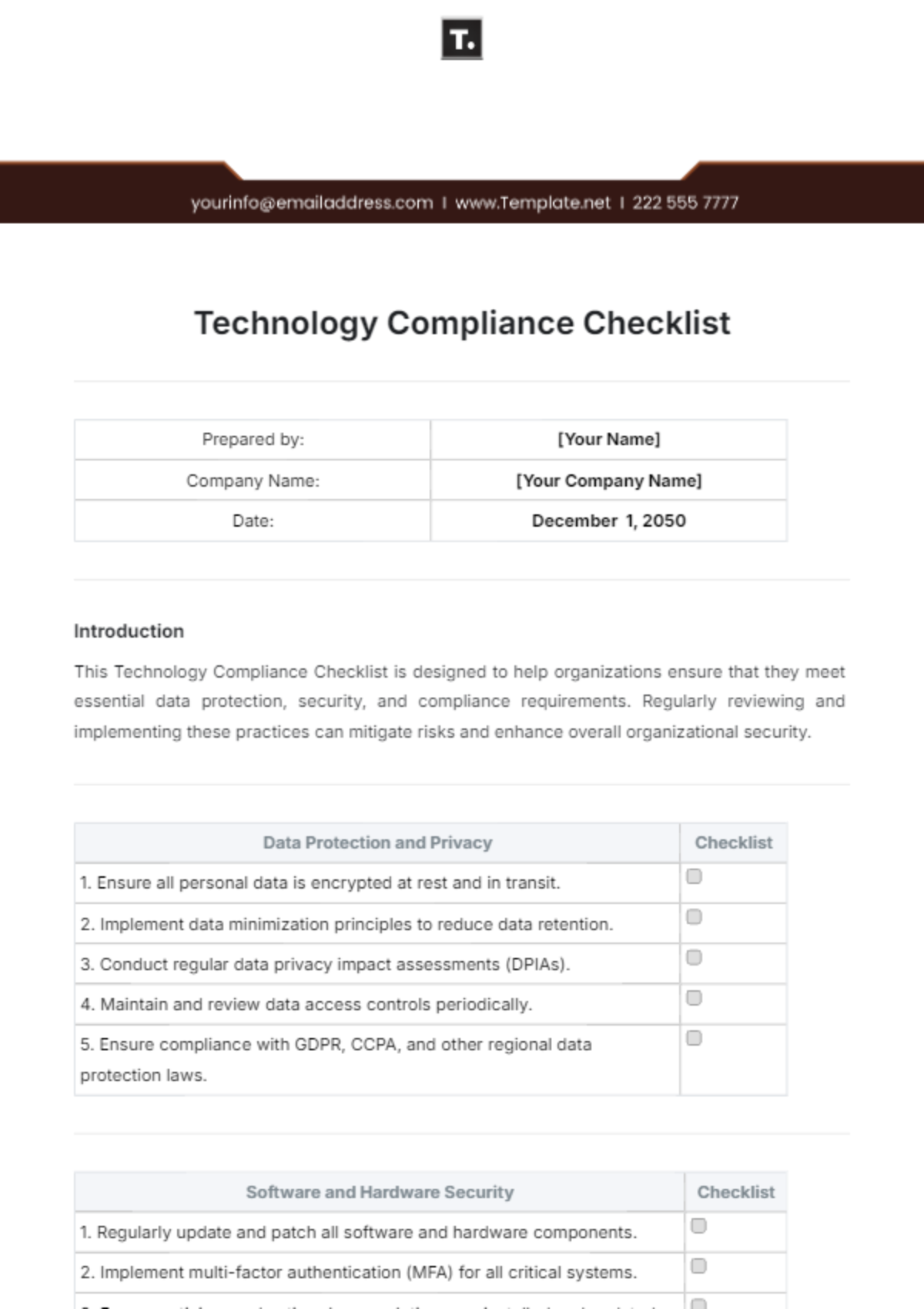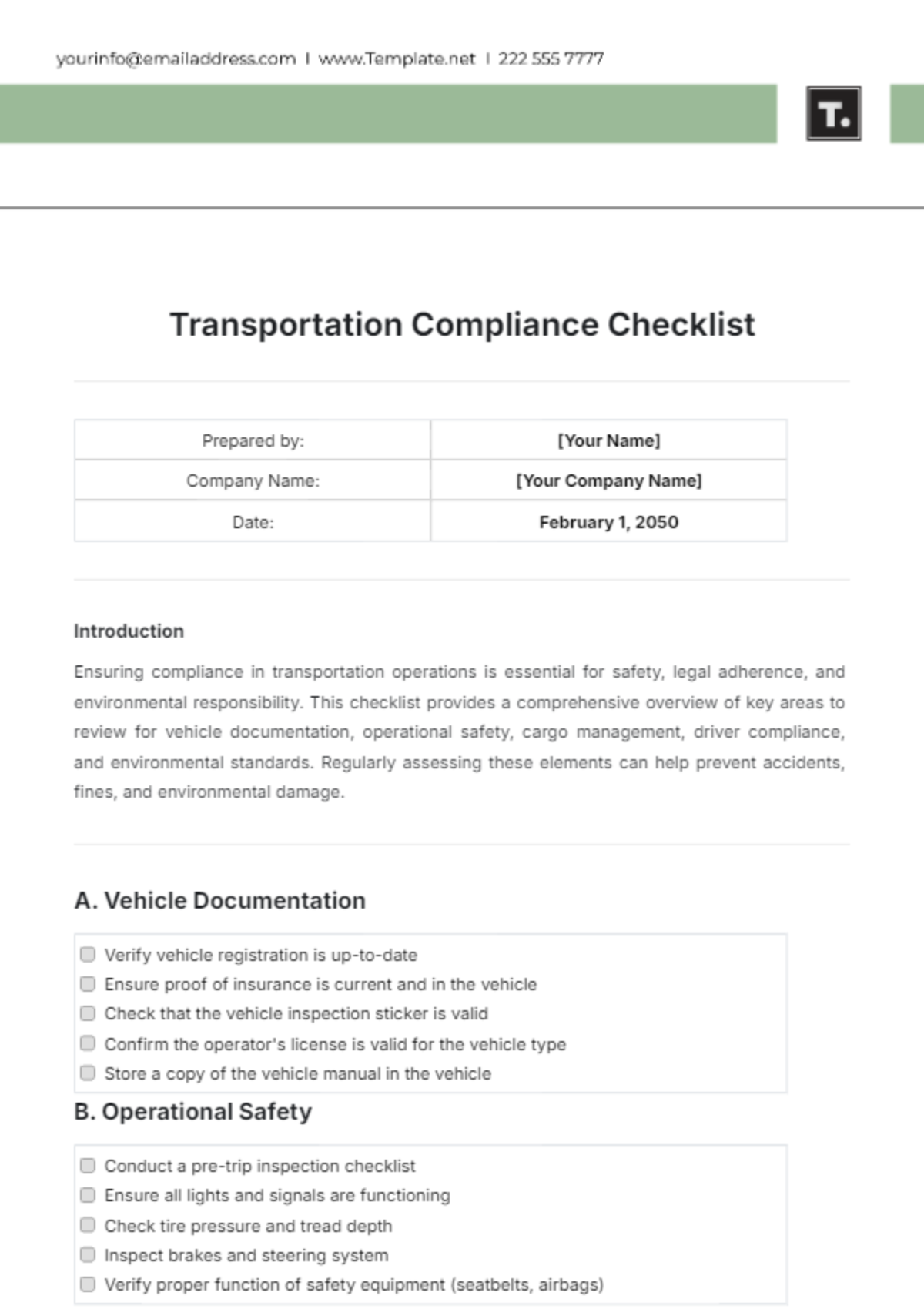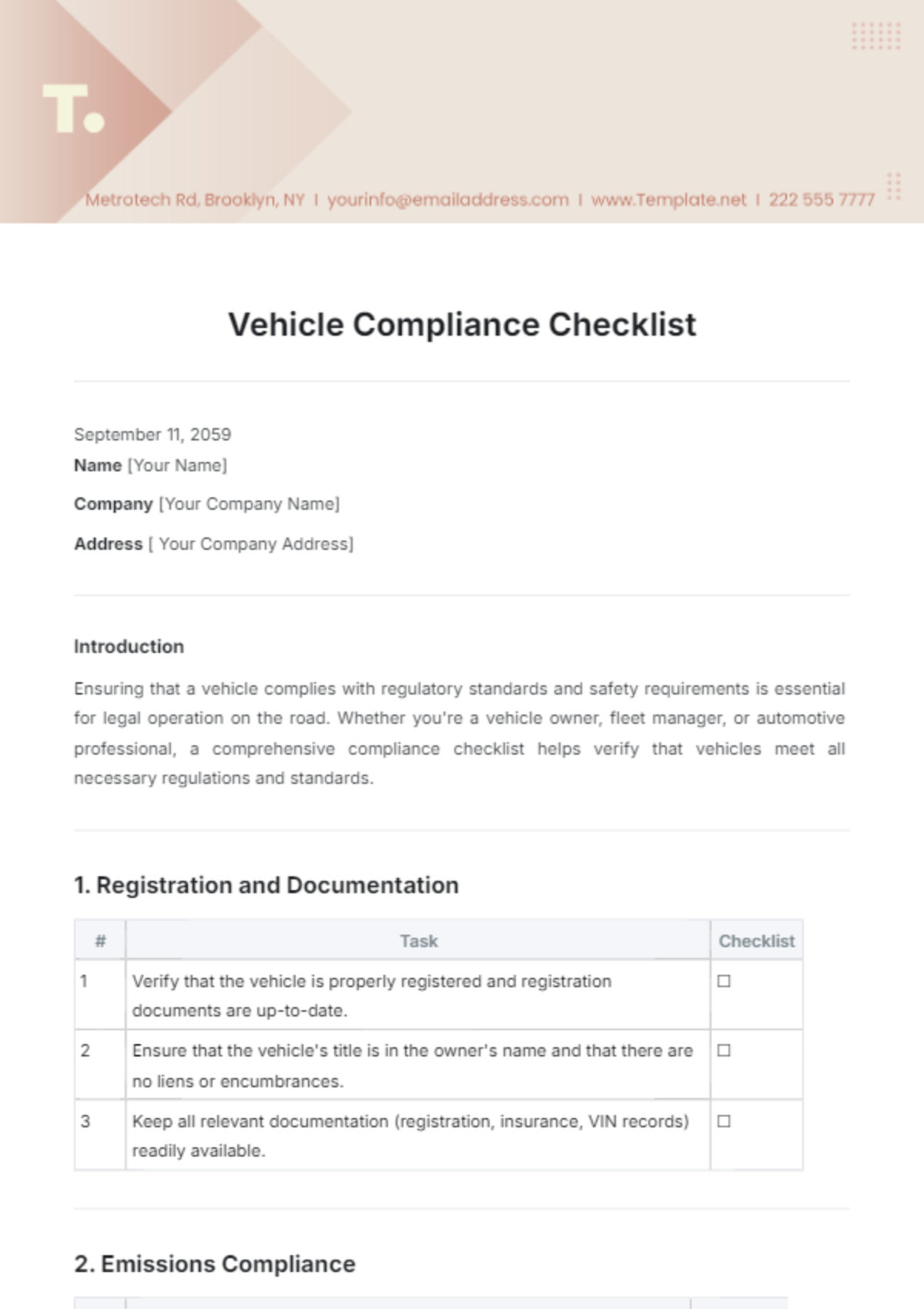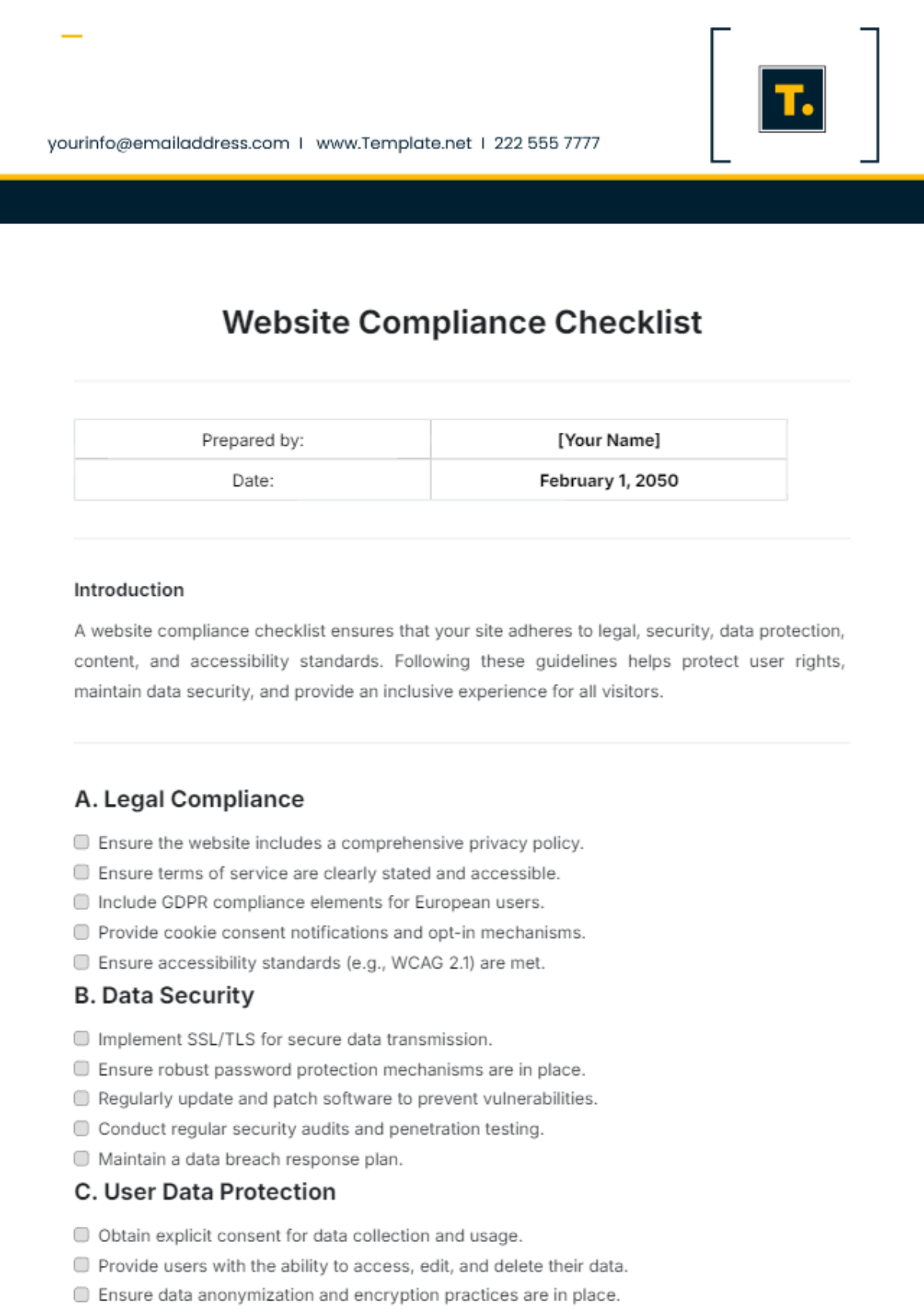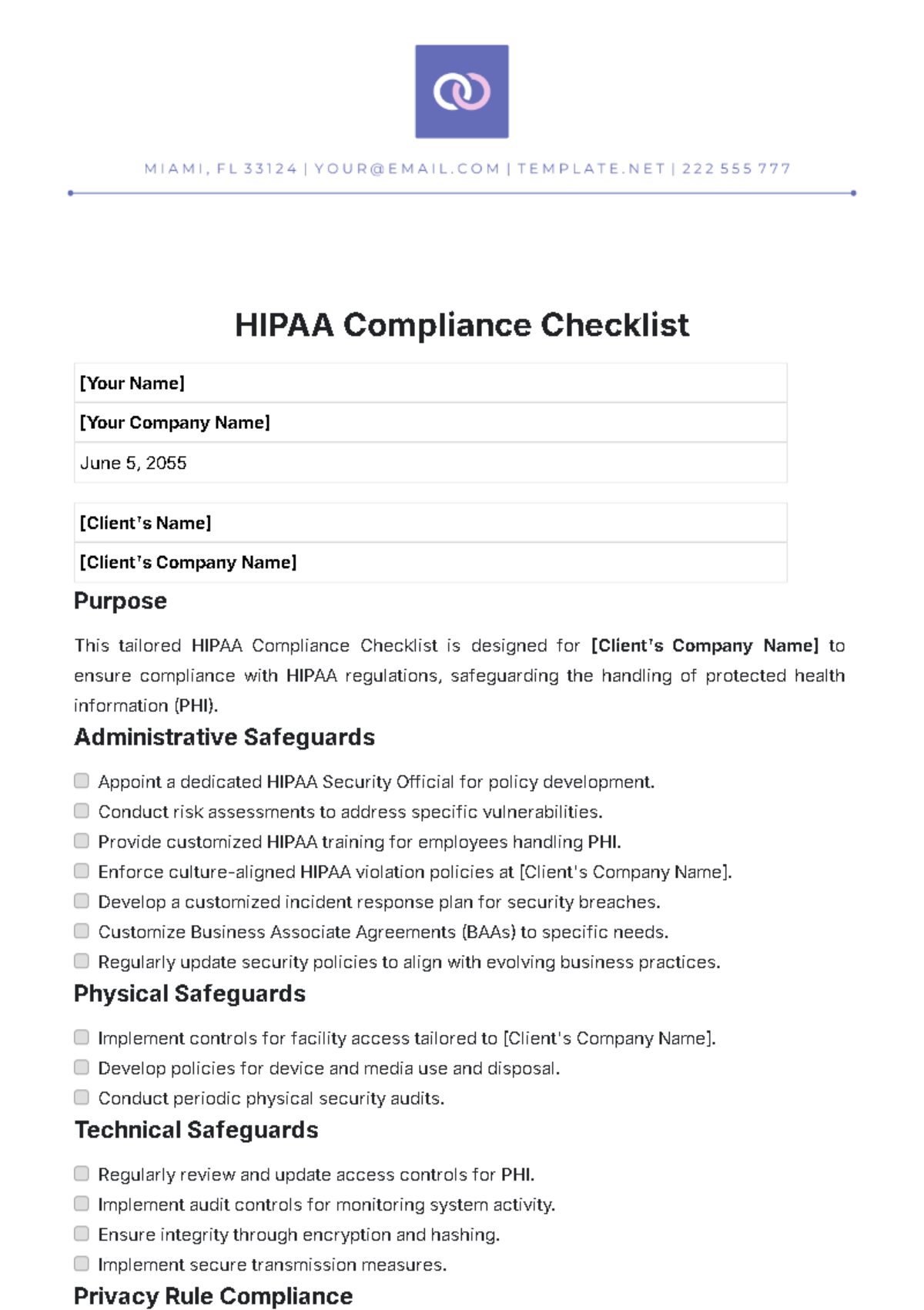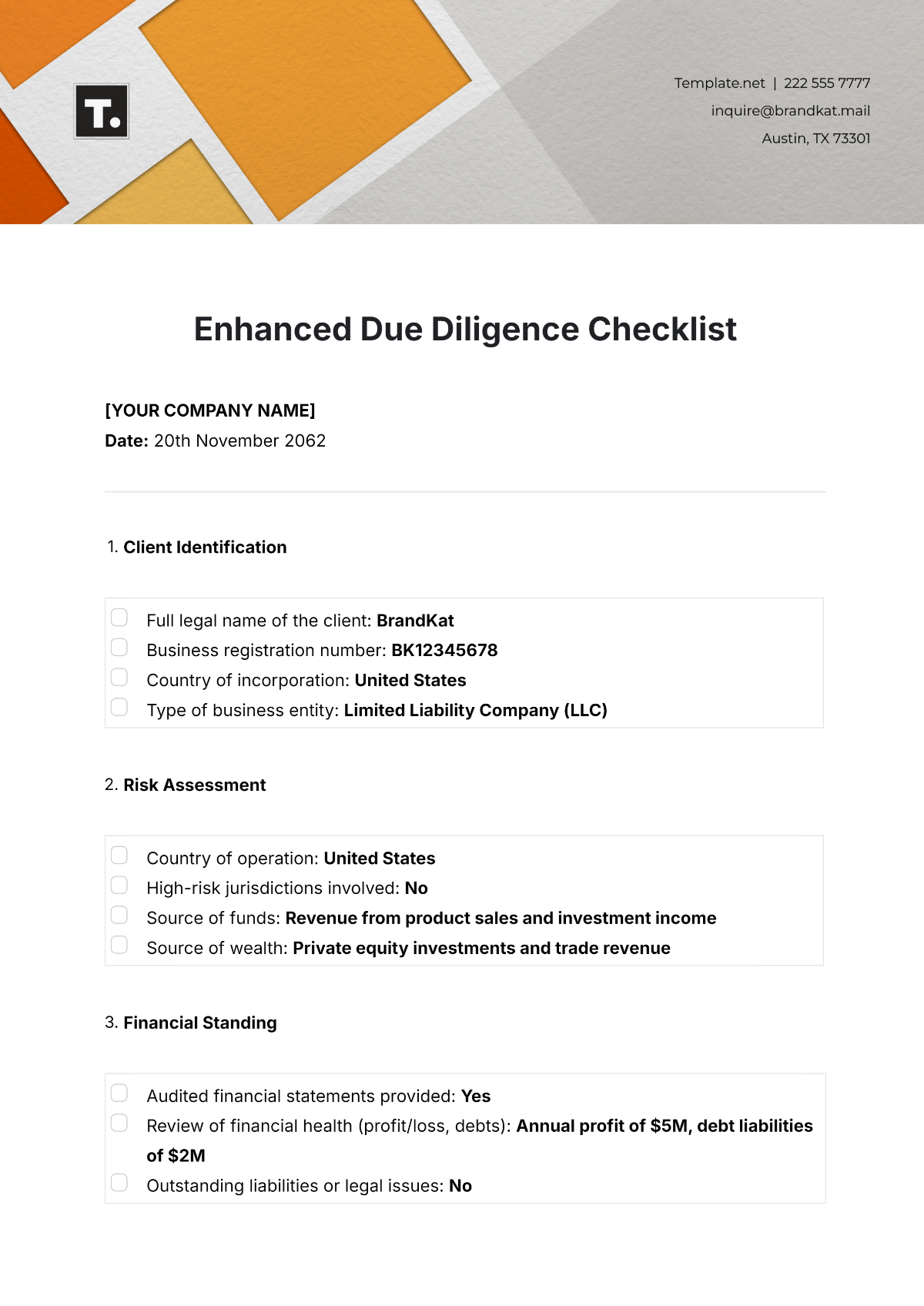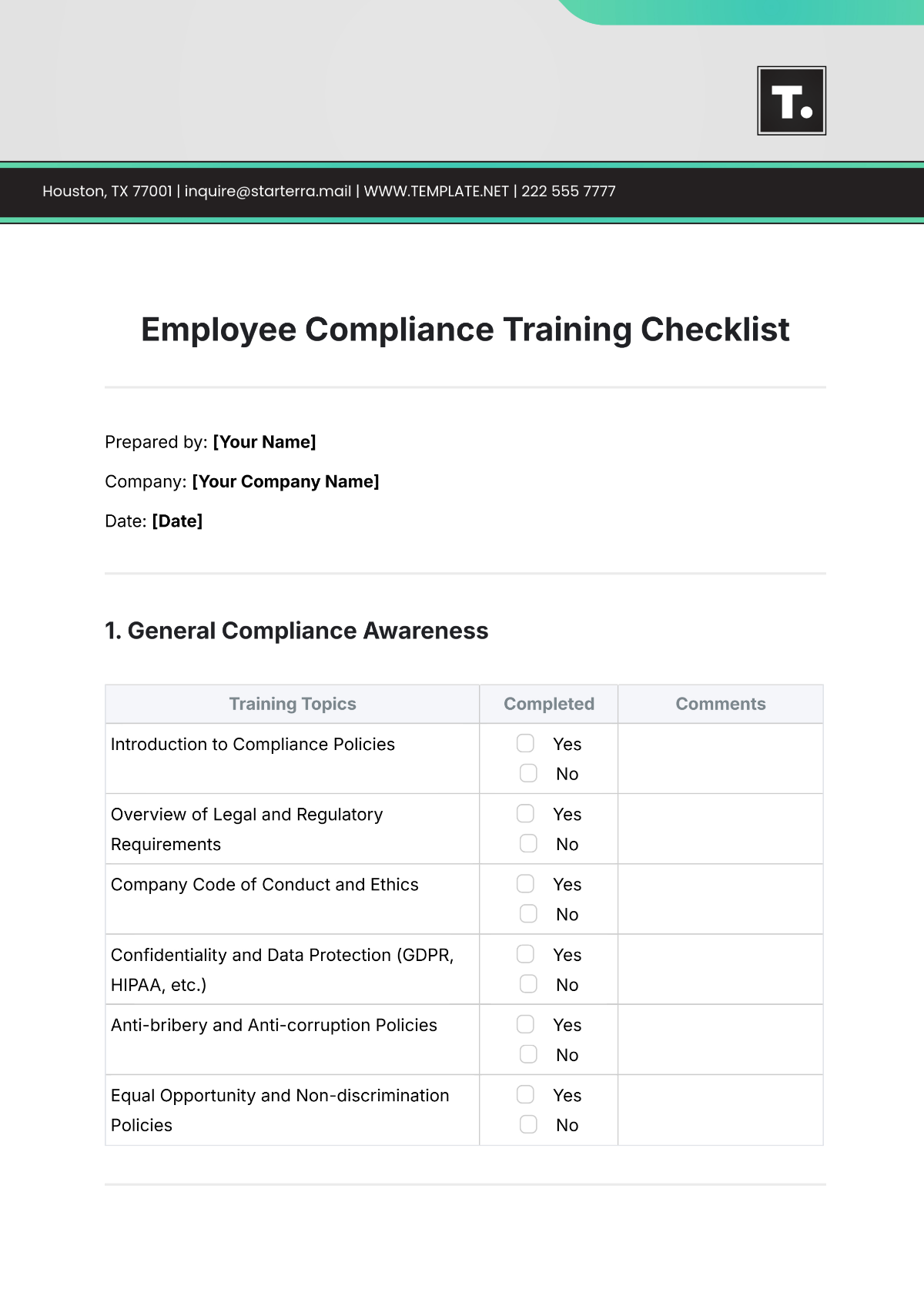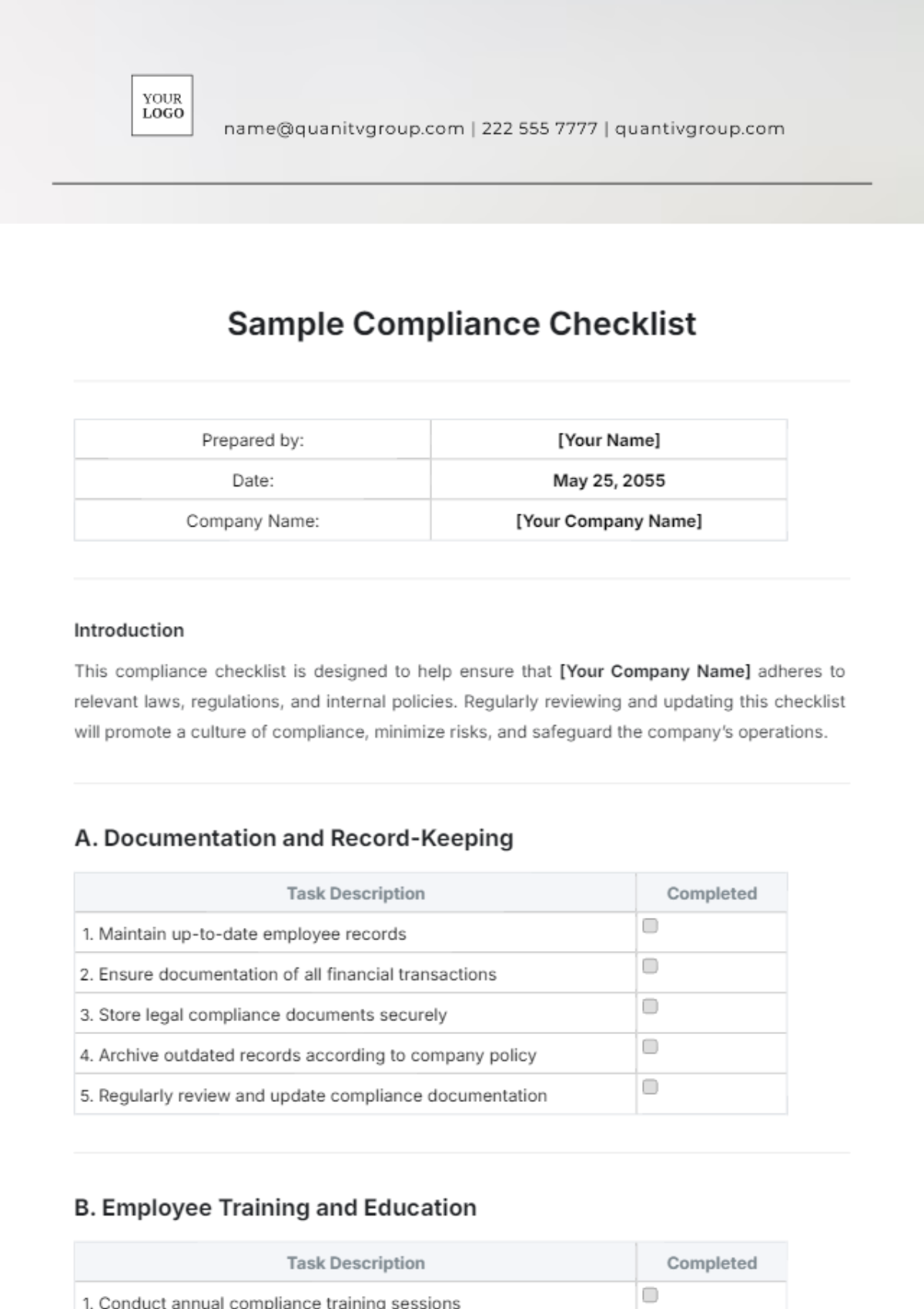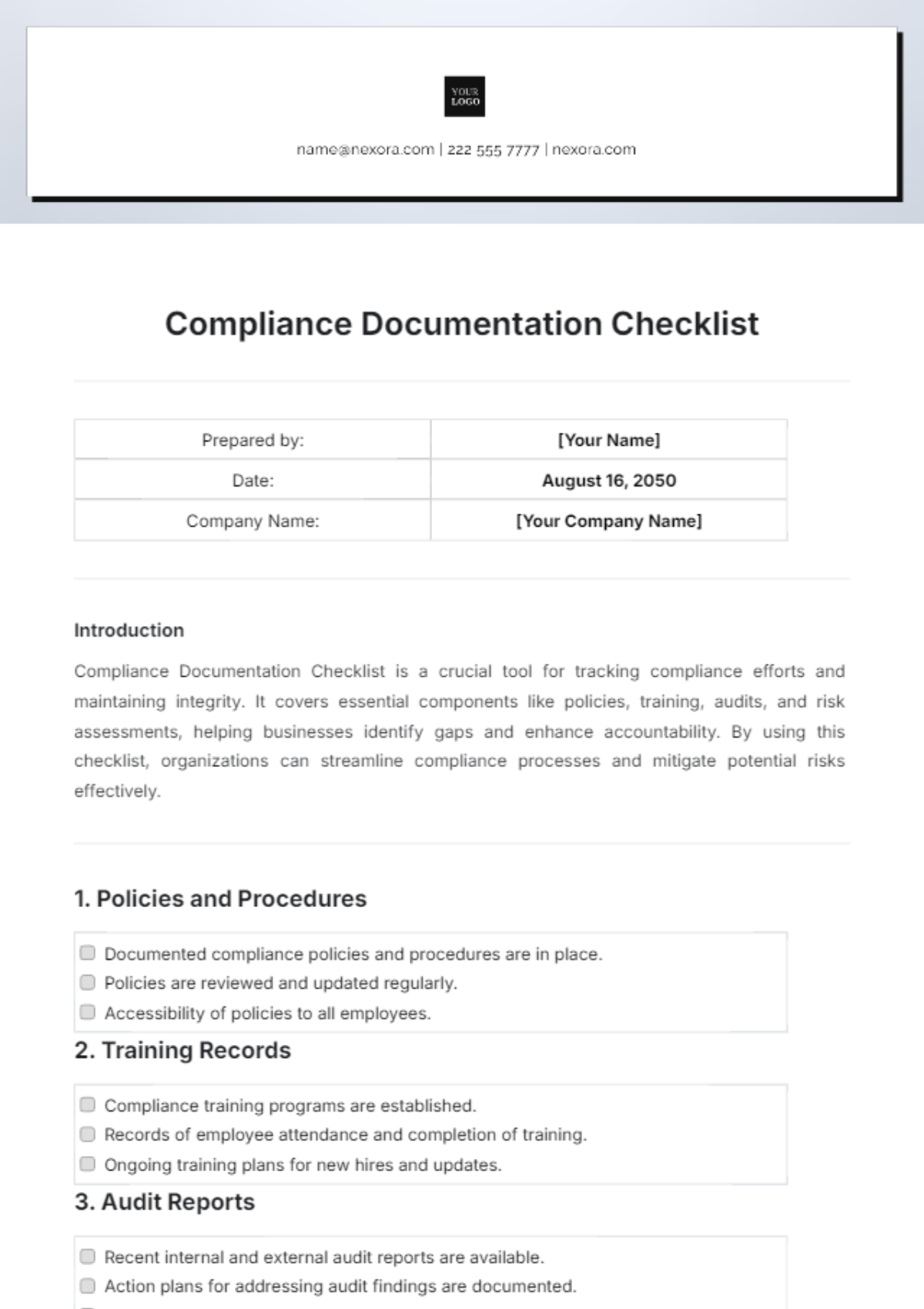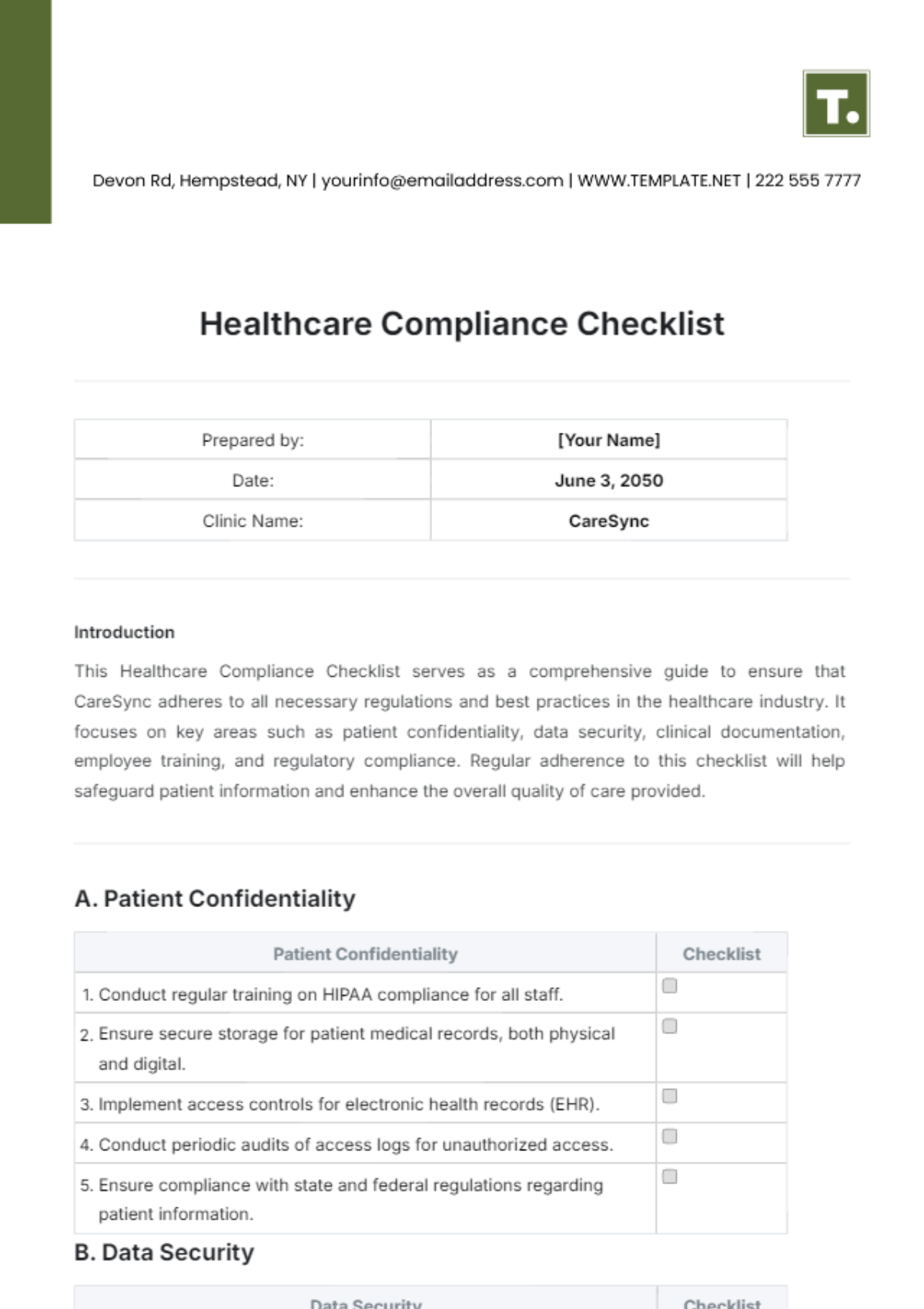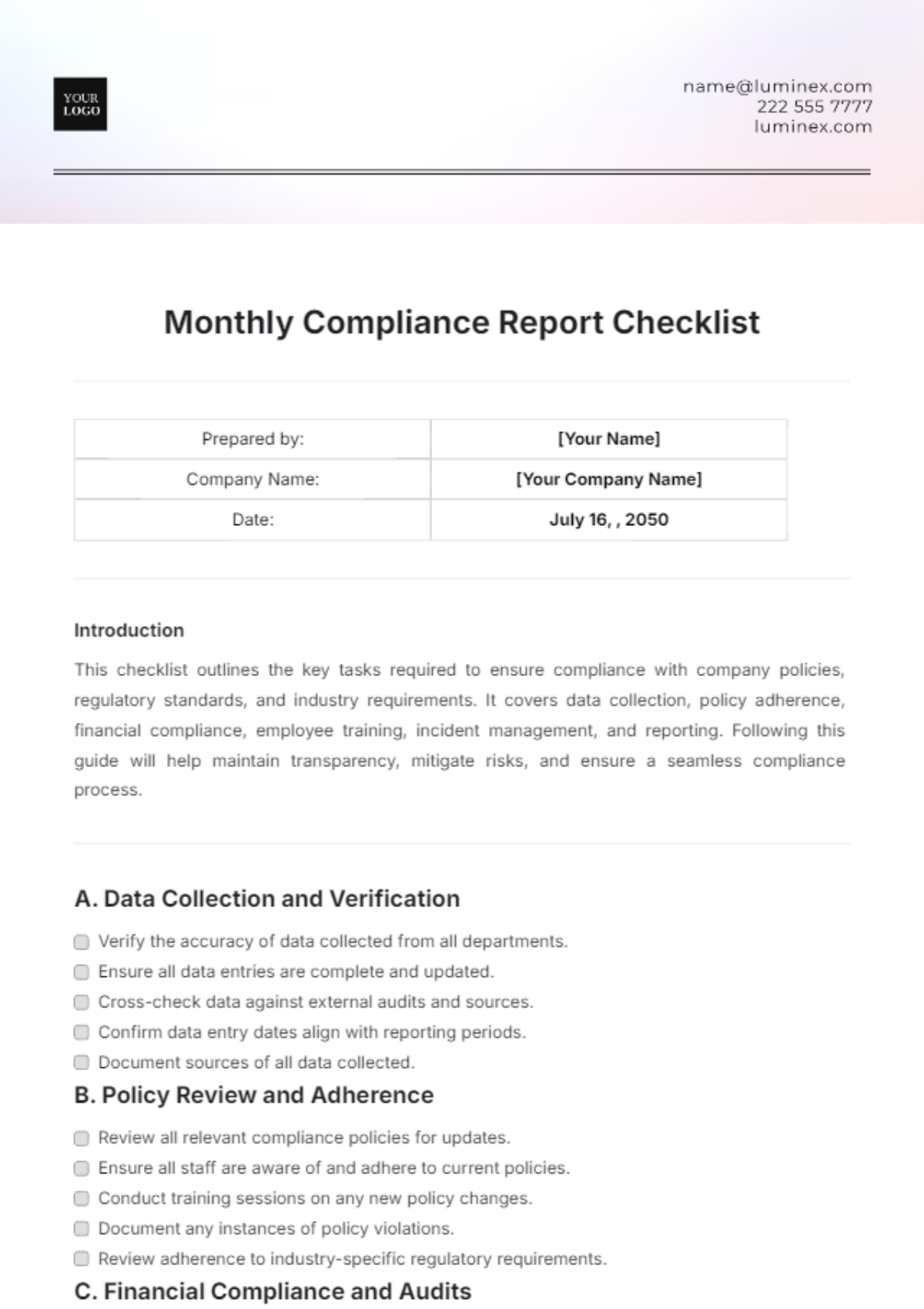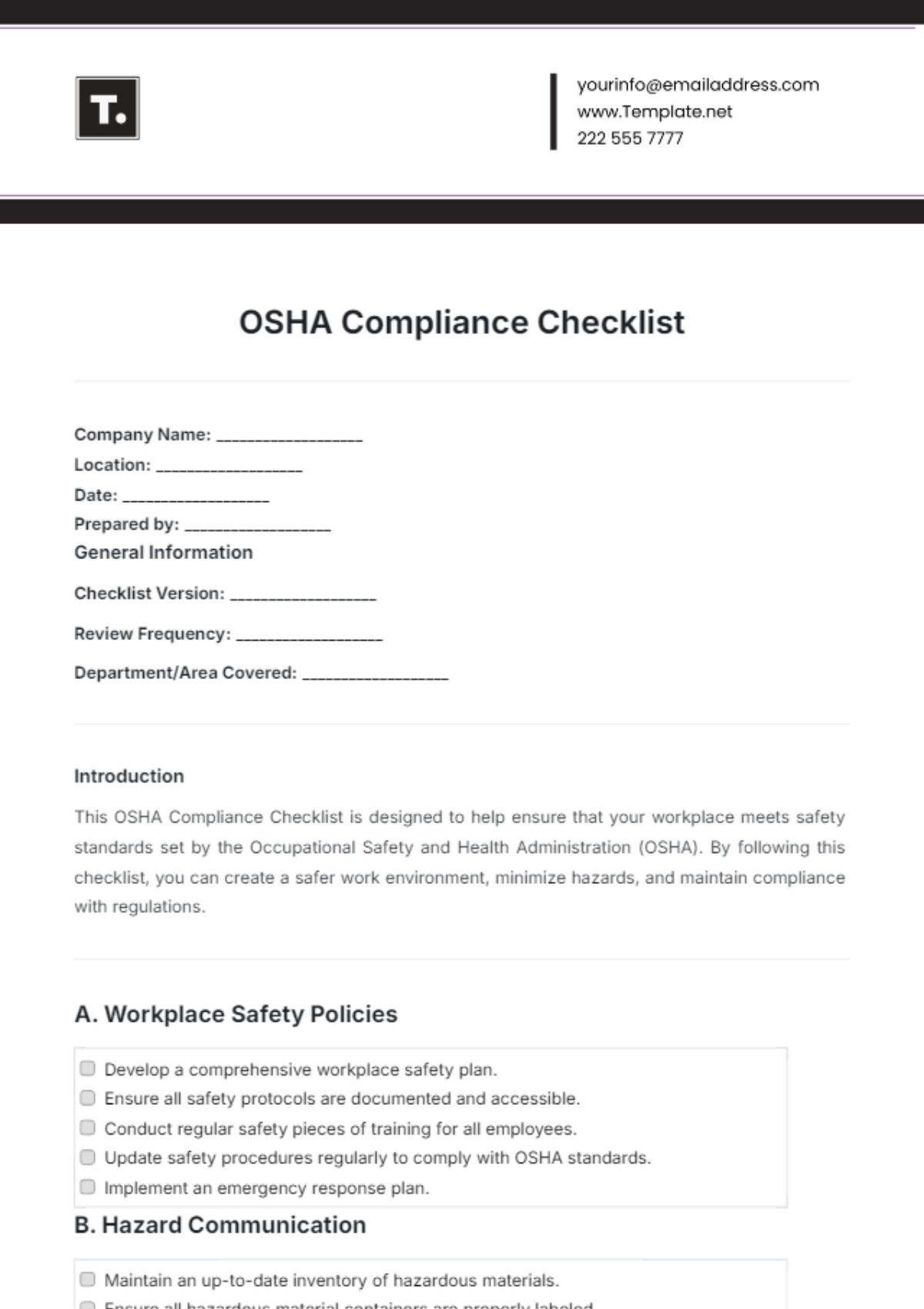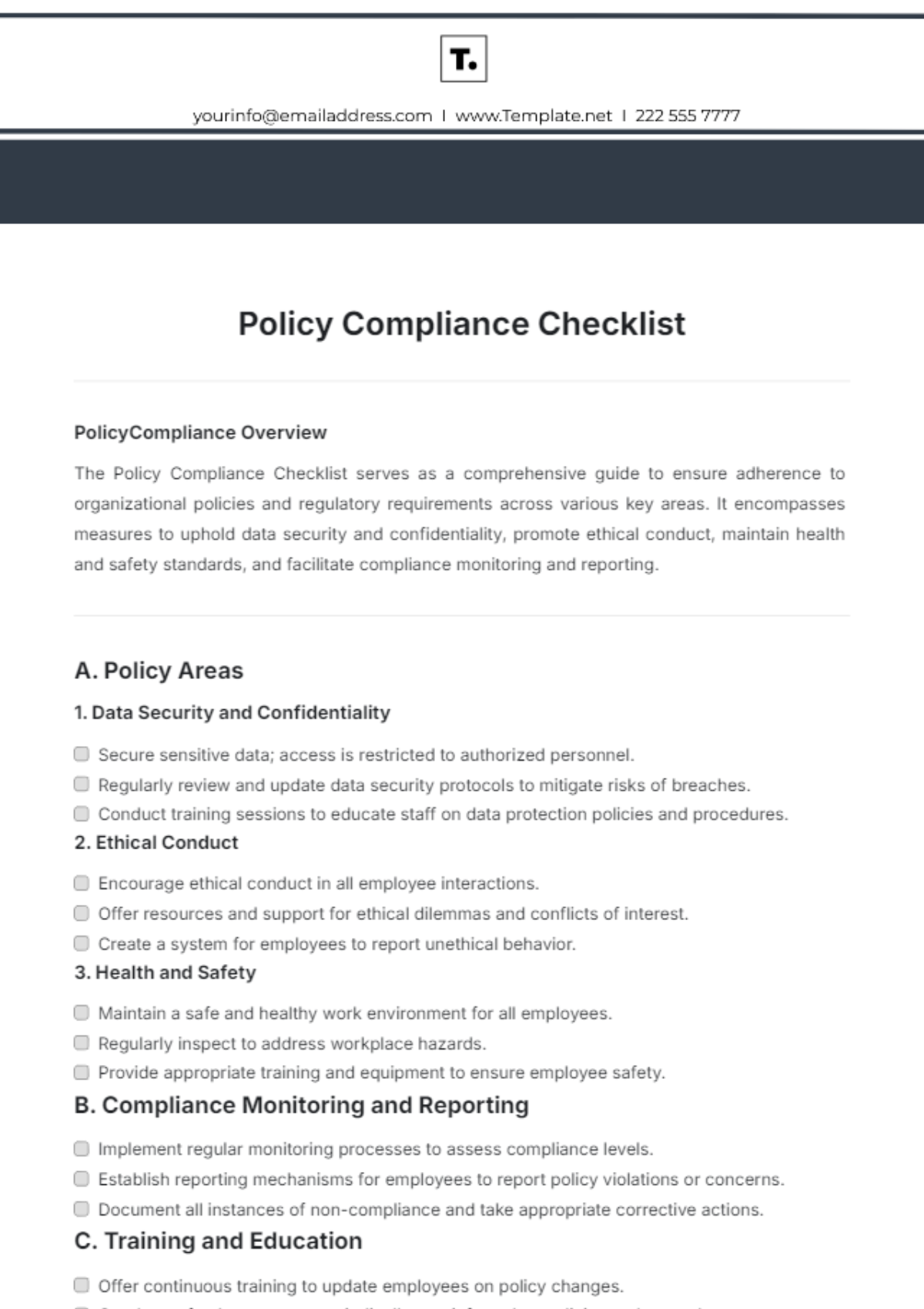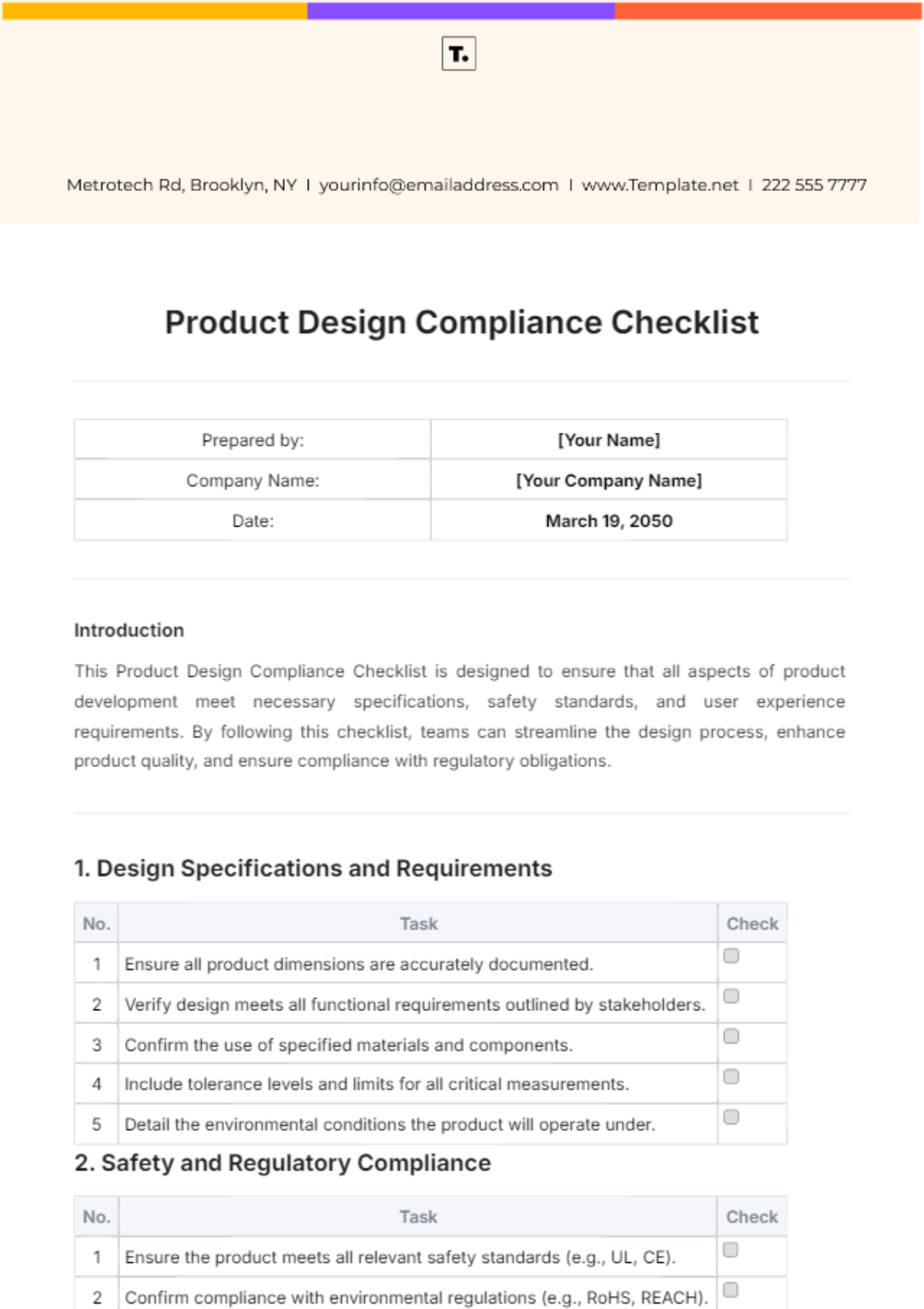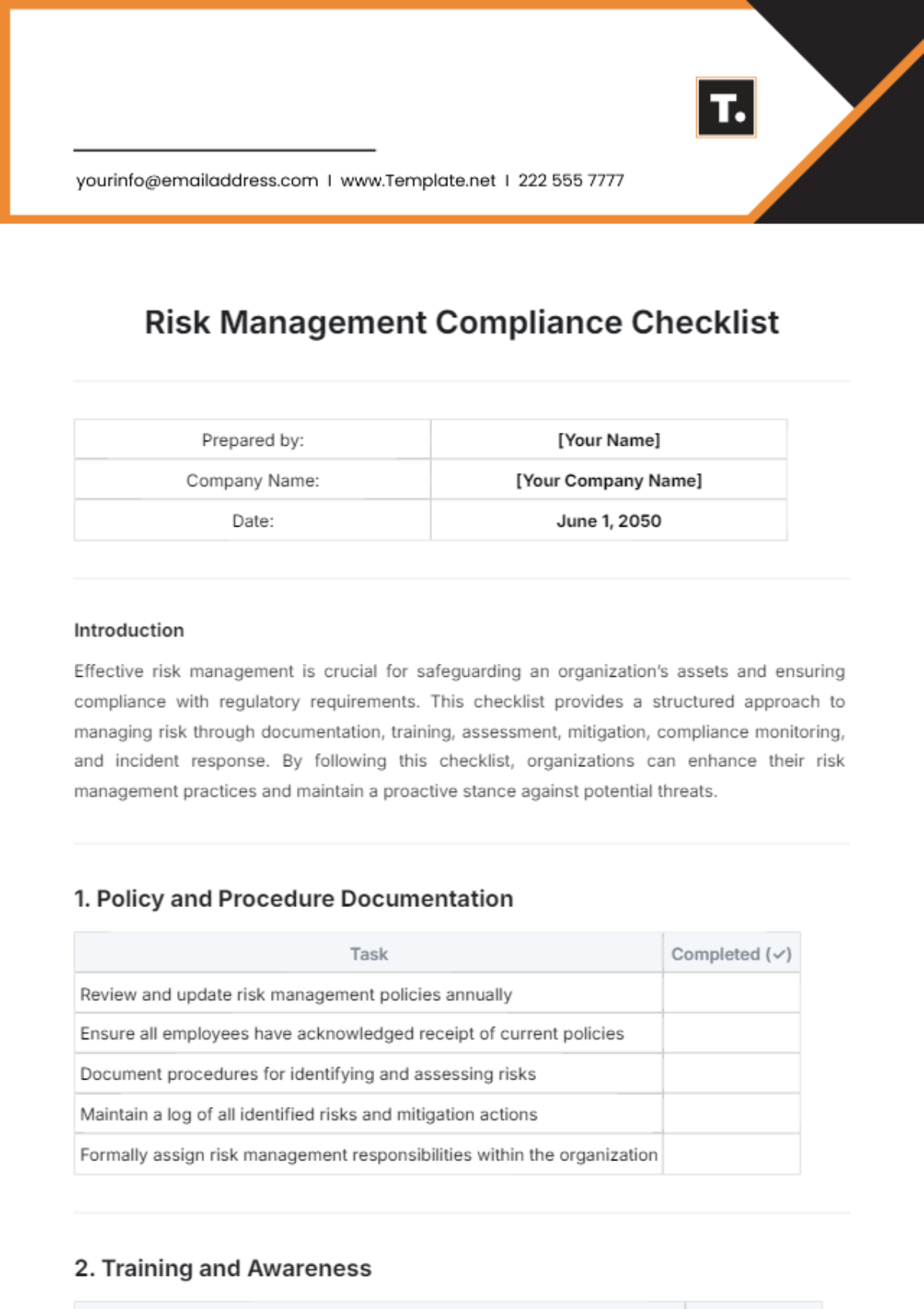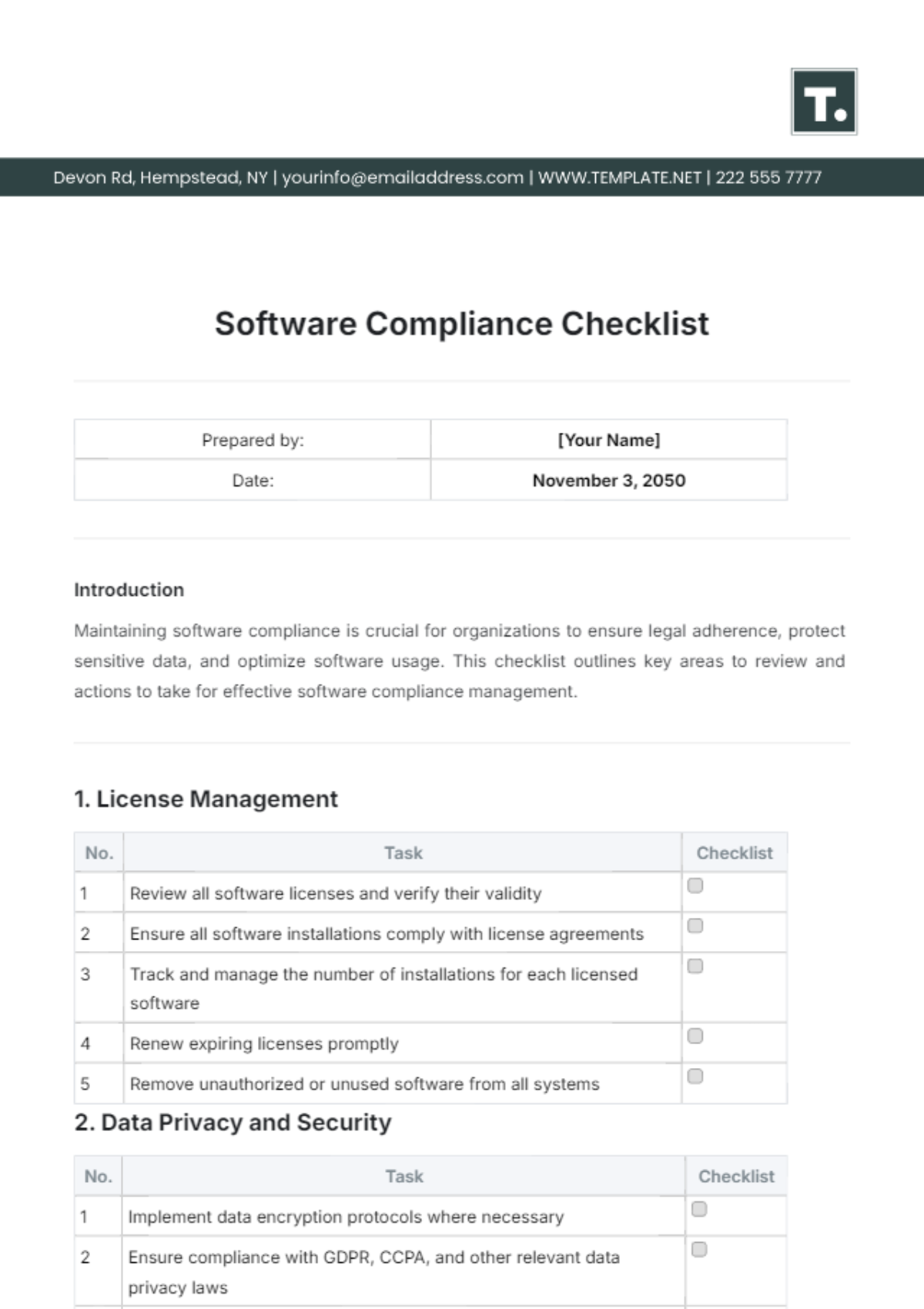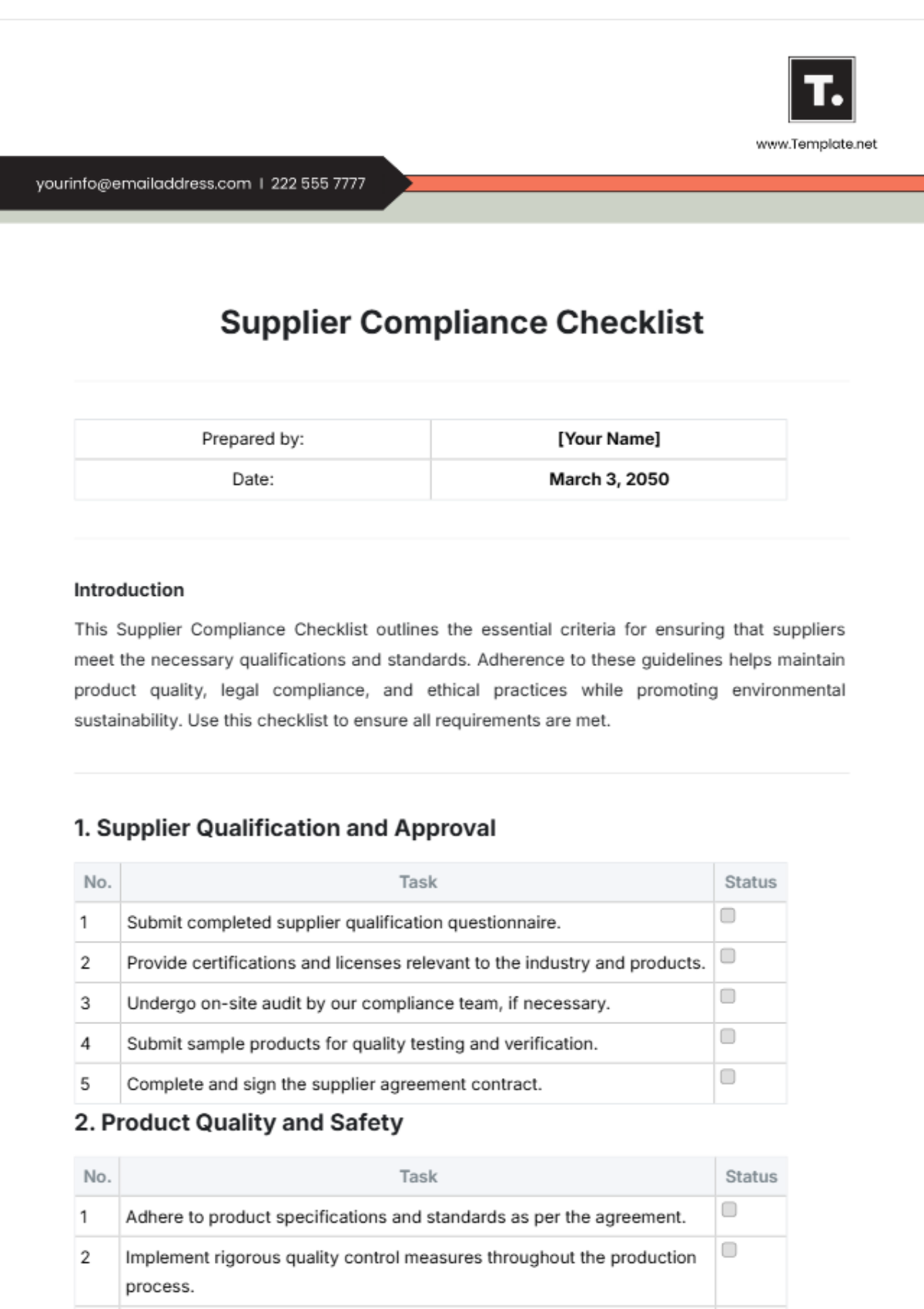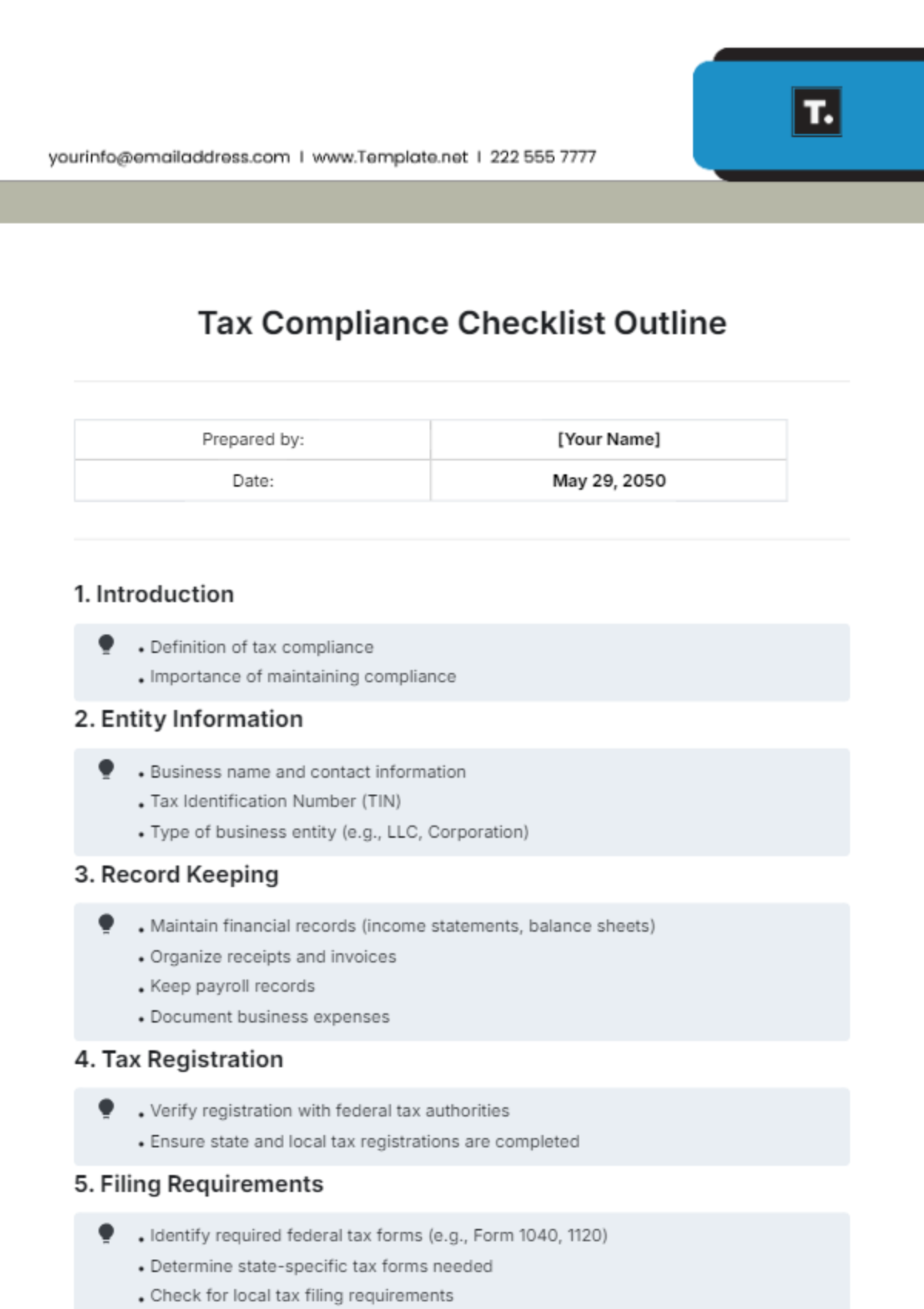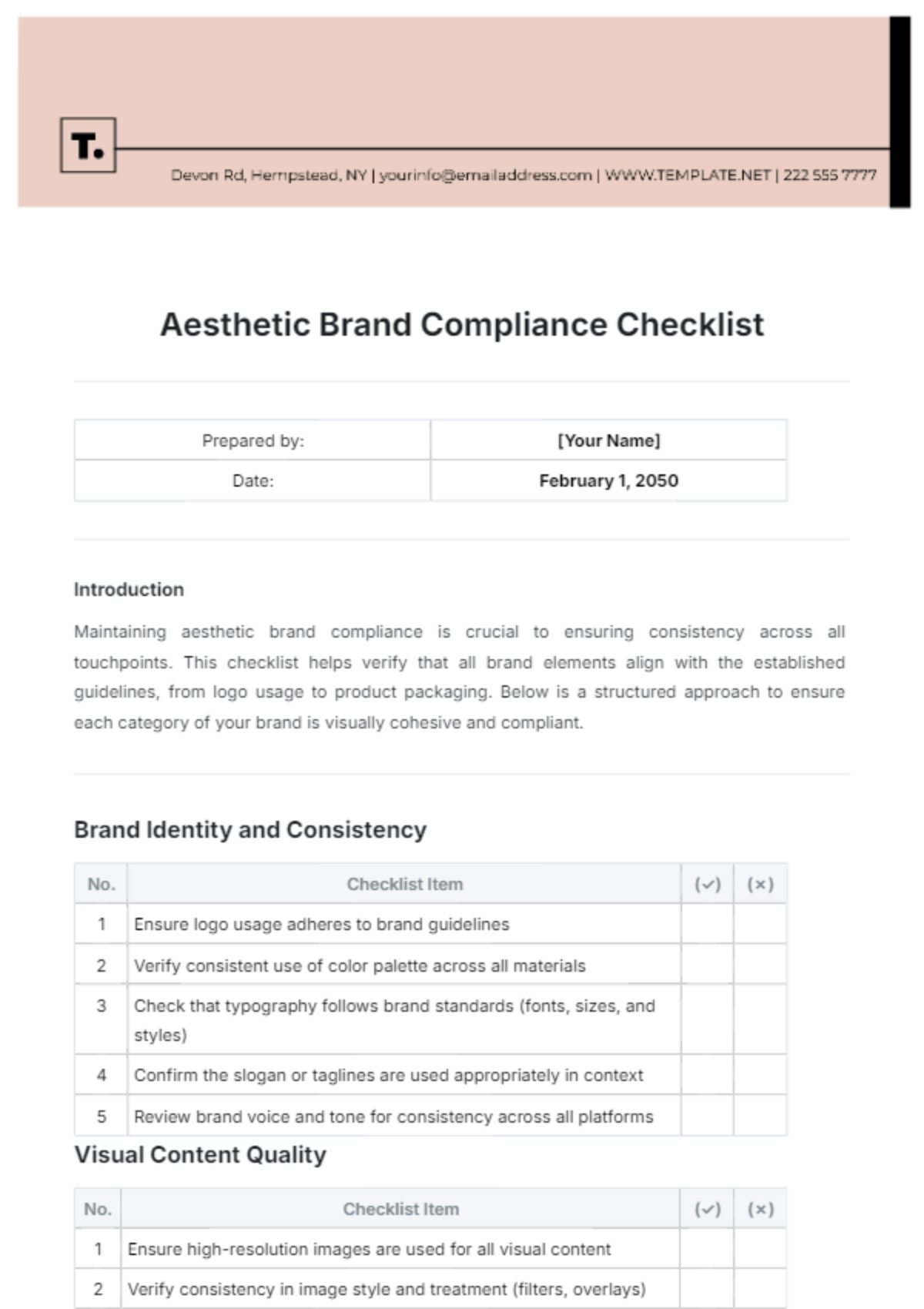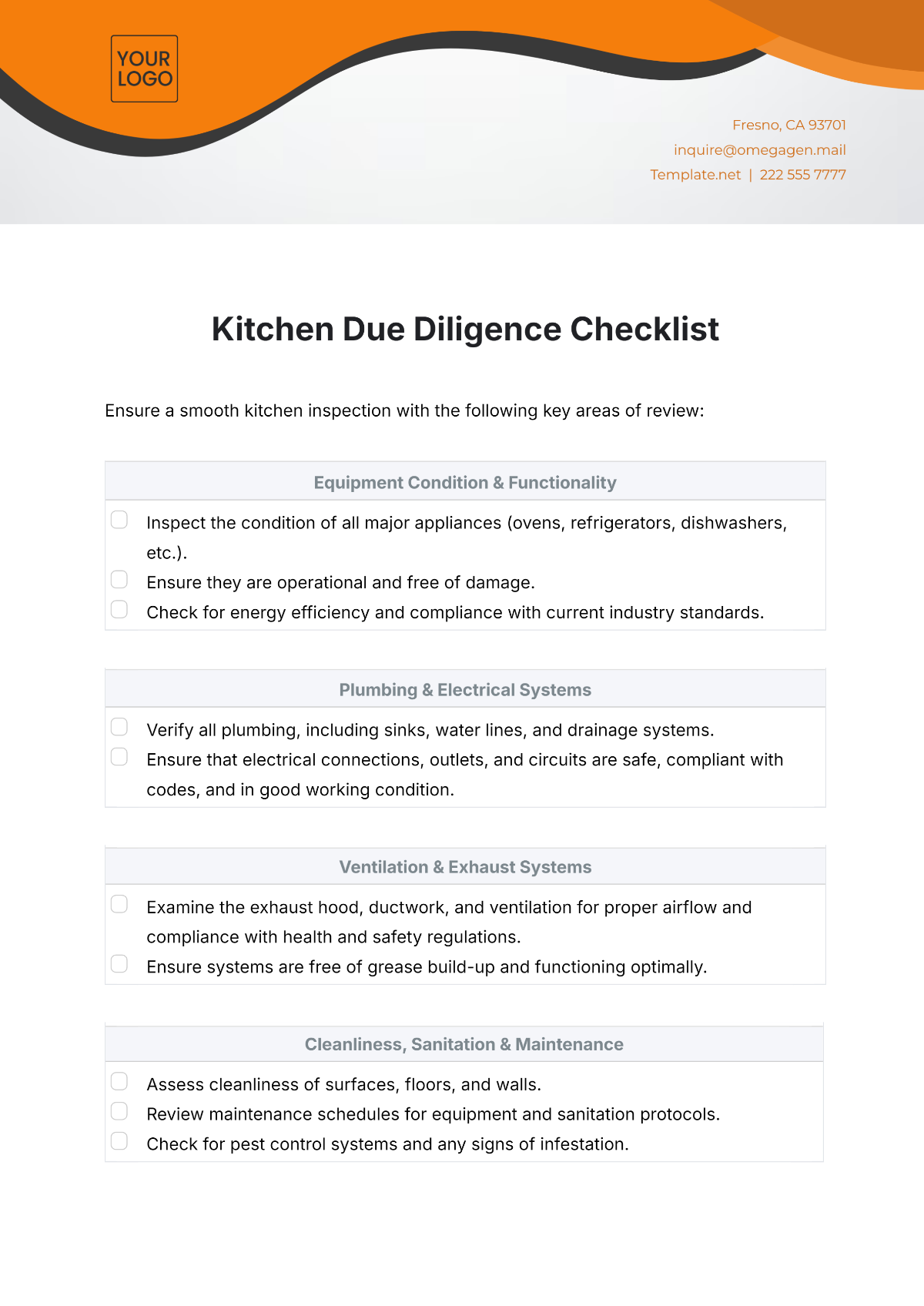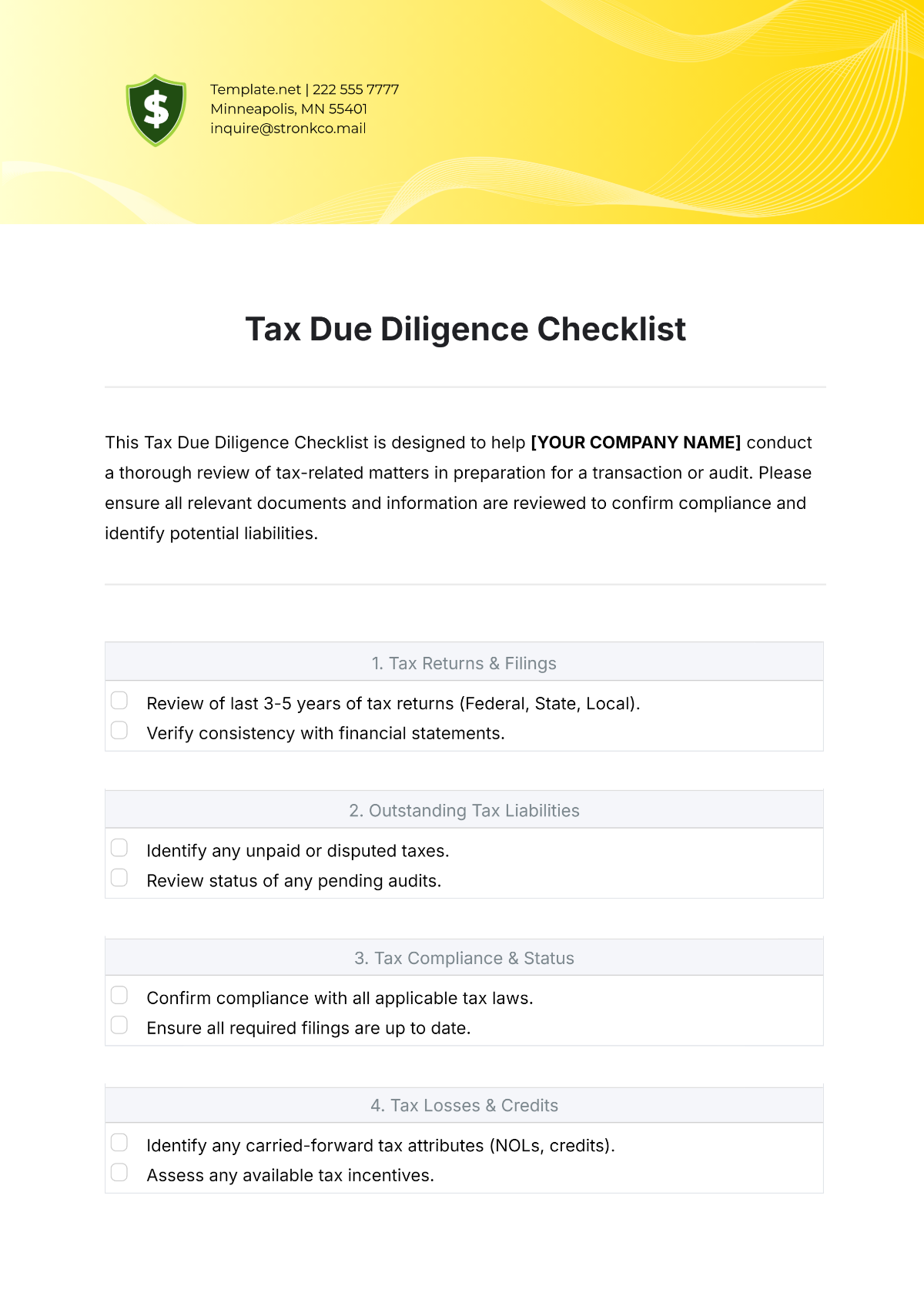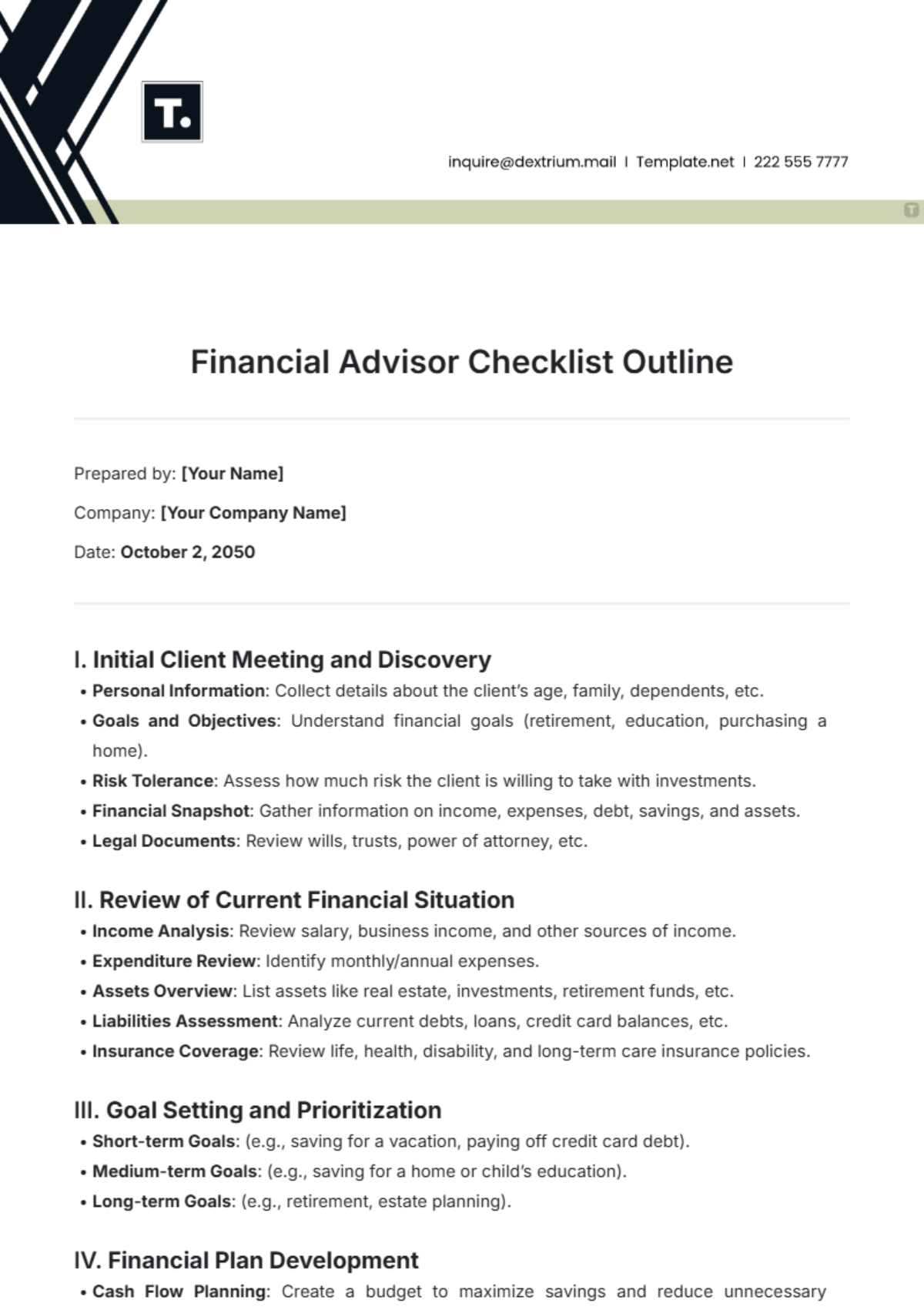Audit Compliance Checklist
I. Compliance Overview
Objective: Conducting periodic internal audits to assess compliance with legal and regulatory requirements.
Responsible Party: [YOUR NAME] [YOUR DEPARTMENT]
Date of Last Review: [DATE]
Next Scheduled Review: [DATE]
II. Pre-Audit Preparation
Define audit objectives and scope.
Identify relevant legal and regulatory requirements.
Determine audit criteria and methodology.
Select key departments or processes to be audited.
III. Audit Execution
Review documentation and records for compliance.
Conduct interviews with relevant personnel.
Evaluate adherence to legal and regulatory requirements.
Identify any gaps or areas of non-compliance.
IV. Findings Documentation
Document audit observations and findings.
Provide evidence supporting identified areas of non-compliance.
Classify findings based on severity and impact.
Communicate audit results to management and relevant stakeholders.
V. Corrective Action Plan
Develop a corrective action plan to address identified non-compliance issues.
Assign responsibility for implementing corrective actions.
Set deadlines for corrective measures to be implemented.
Allocate resources necessary for compliance improvements.
Monitor progress of corrective actions.
VI. Follow-Up and Monitoring
Conduct follow-up audits to verify effectiveness of corrective actions.
Review and update audit procedures based on findings and feedback.
Monitor ongoing compliance through regular audits and assessments.
Provide feedback and recommendations for continuous improvement.
VII. Legal and Regulatory Requirements Assessment
Review relevant laws, regulations, and industry standards applicable to the organization.
Assess the organization's compliance with these legal and regulatory requirements.
Identify any updates or changes to laws and regulations that may impact compliance.
VIII. Risk Assessment
Conduct a risk assessment to identify potential areas of non-compliance or vulnerabilities.
Evaluate the likelihood and potential impact of identified risks on the organization.
Prioritize risks based on their significance and develop mitigation strategies.
IX. Documentation and Record-keeping
Ensure that all audit activities, findings, and reports are adequately documented.
Maintain records of audit documentation and evidence for future reference and review.
Safeguard audit records to ensure confidentiality, integrity, and availability.
X. Training and Awareness
Provide training to employees on relevant legal and regulatory requirements.
Ensure that employees are aware of their responsibilities regarding compliance.
Offer training programs to audit personnel to enhance their knowledge and skills.
XI. Continuous Improvement
Review audit findings and lessons learned to identify areas for improvement.
Implement measures to address systemic issues and prevent recurrence of non-compliance.
Regularly review and update audit processes and procedures to enhance effectiveness.
XII. Completion and Sign-off
By checking the box below, I acknowledge that I have reviewed and completed the Audit Compliance Checklist Template.

Completed by: [YOUR NAME] [YOUR DEPARTMENT]
Date: [DATE]
